BIANCA D’ALESSANDRO
Kamil Dossar
Delight
29.11.24 – 11.01.25

Delight, 2024. Installation view

Pyromancy 1, 2024. Ink on paper, tracing paper, string, tape, aluminium. 38 x 40 cm

Delight, 2024. Installation view

Pyromancy 2, 2024. Ink on paper, tracing paper, string, tape, aluminium. 38 x 40 cm

Delight, 2024. Installation view

Delight, 2024. Installation view

Pyromancy 3, 2024. Ink on paper, tracing paper, string, tape, aluminium. 38 x 40 cm

Delight, 2024. Installation view

Delight, 2024. Installation view

Delight, 2024. Installation view

Delight, 2024. Installation view

Delight, 2024. Installation view

Skeleton Key, 2024. Acrylic, charcoal on aluminium. 200 x 100 cm

Skeleton Key, 2024. Acrylic, charcoal on aluminium. 200 x 100 cm (detail)

Delight, 2024. Installation view
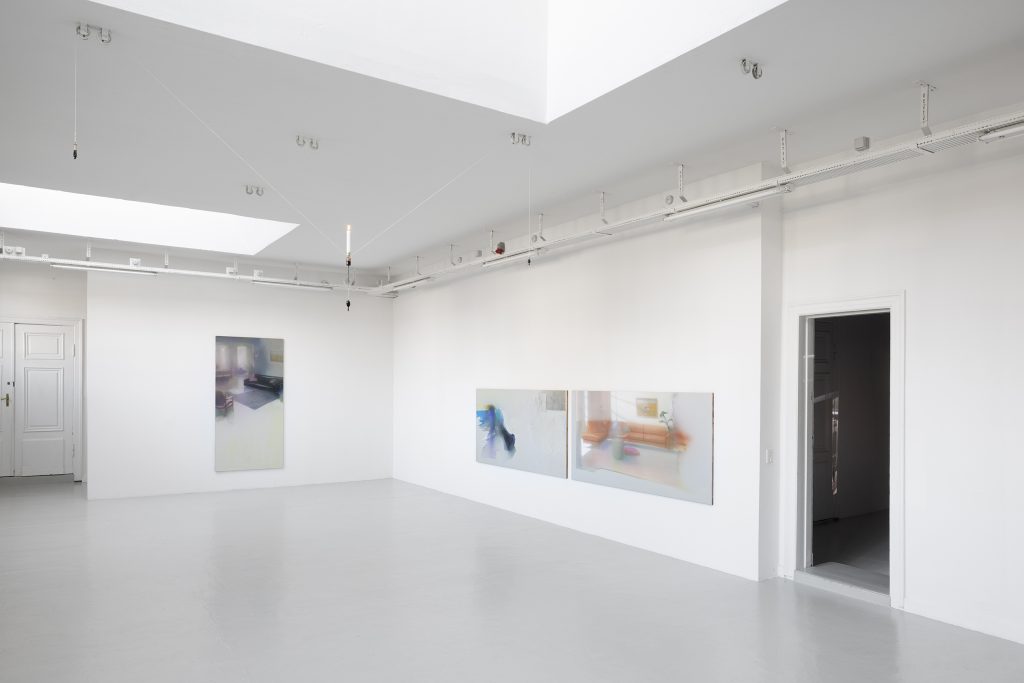
Delight, 2024. Installation view

Delight, 2024. Installation view

Room #1, 2024. Acrylic, oil on aluminium. 200 x 100 cm

Room #1, 2024. Acrylic, oil on aluminium. 200 x 100 cm (detail)

Delight, 2024. Installation view

Delight, 2024. Installation view

Fire Rite, 2024. Acrylic, oil, charcoal on aluminium. 200 x 100 cm

Fire Rite, 2024. Acrylic, oil, charcoal on aluminium. 200 x 100 cm. (detail)

Delight, 2024. Installation view

Delight, 2024. Installation view

Room #2, 2024. Acrylic, oil on aluminium. 200 x 100 cm

Room #2, 2024. Acrylic, oil on aluminium. 200 x 100 cm. (detail)

Delight, 2024. Installation view

Delight, 2024. Installation view

Delight, 2024. Installation view

Delight, 2024. Installation view
Photography Jan Søndergaard
Gallery hours Tuesday – Friday 12 noon – 5 pm Saturday 12 noon – 3 pm
Frederiksholms Kanal 28A 1220 Copenhagen K +45 22994301
Rikard Thambert
Vegetable
17.08.24 – 21.09.24

Vegetable, 2024. Installation view

Playtime, 2024. Cast acrylic, aluminum leaf. 146 x 65 x 58 cm

Playtime, 2024. Cast acrylic, aluminum leaf. 146 x 65 x 58 cm (detail)

Playtime, 2024. Cast acrylic, aluminum leaf. 146 x 65 x 58 cm (detail)

Vegetable, 2024. Installation view

Lunch Box, 2024. Stoneware. 37 x 24 x 25 cm

Lunch Box, 2024. Stoneware. 37 x 24 x 25 cm (detail)

Lunch Box, 2024. Stoneware. 37 x 24 x 25 cm

Vegetable, 2024. Installation view

Voicemail, 2024. Stoneware. 34 x 29 x 17 cm

Voicemail, 2024. Stoneware. 34 x 29 x 17 cm (detail)

Voicemail, 2024. Stoneware. 34 x 29 x 17 cm (detail)

Voicemail, 2024. Stoneware. 34 x 29 x 17 cm

Vegetable, 2024. Installation view

Mechanism, 2024. Stoneware. 38 x 30 x 30 cm

Mechanism, 2024. Stoneware. 38 x 30 x 30 cm

Vegetable, 2024. Installation view

Vegetable, 2024. Installation view

Taxi, Taxi!, 2024. Cast acrylic, laquer. 150 x 70 x 67 cm

Taxi, Taxi!, 2024. Cast acrylic, laquer. 150 x 70 x 67 cm (detail)

Vegetable, 2024. Installation view

Vegetable, 2024. Installation view

Vegetable, 2024. Installation view

Vegetable, 2024. Installation view

Small mouth noise, 2024. Terracotta. 33 x 36 x 21 cm

Small mouth noise, 2024. Terracotta. 33 x 36 x 21 cm (detail)

Vegetable, 2024. Installation view
Rikard Thambert
Vegetable
17.08.24 – 21.09.24
Photography Jan Søndergaard
Gallery hours Tuesday – Friday 12 noon – 5 pm Saturday 12 noon – 3 pm
Frederiksholms Kanal 28A 1220 Copenhagen K +45 22994301
Kirsten Lockenwitz
White Heat Diamond
25.04.24 – 18.05.24

White Heat Diamond, 2024. Installation view

White Heat Diamond, 1984. Acrylic, mirror, argon. 120 x 67 x 120cm

White Heat Diamond, 2024. Installation view
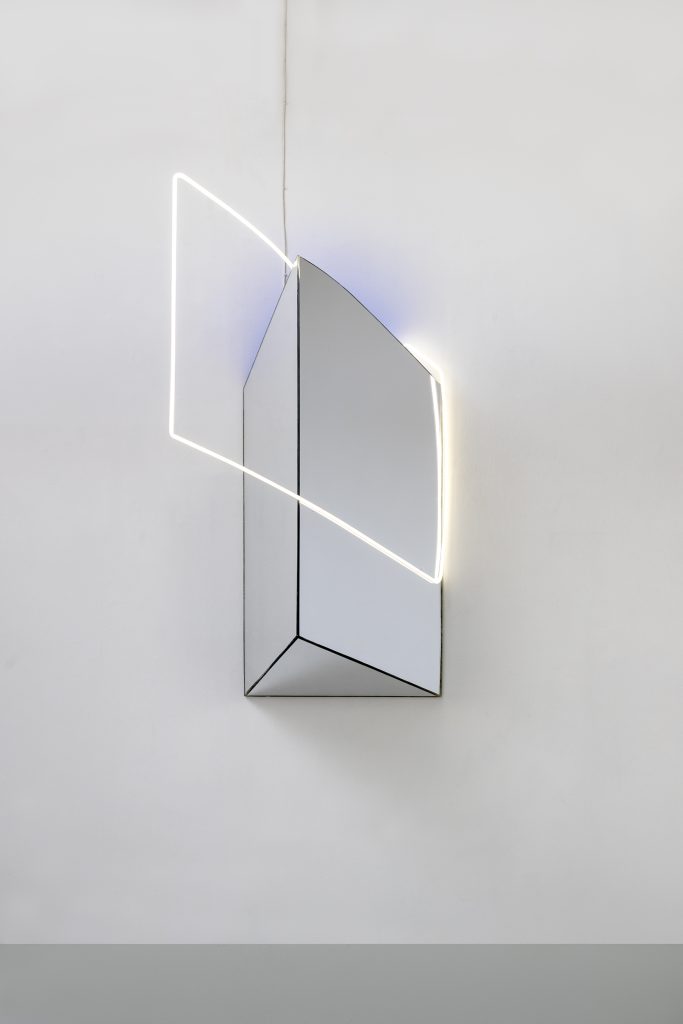
White Heat Diamond, 2024. Installation view

White Heat Diamond, 2024. Installation view

White Heat Diamond, 2024. Installation view

Talisman, 1992. Acrylic, ice, India ink. 125.5 x 89.5 x 10.5 cm
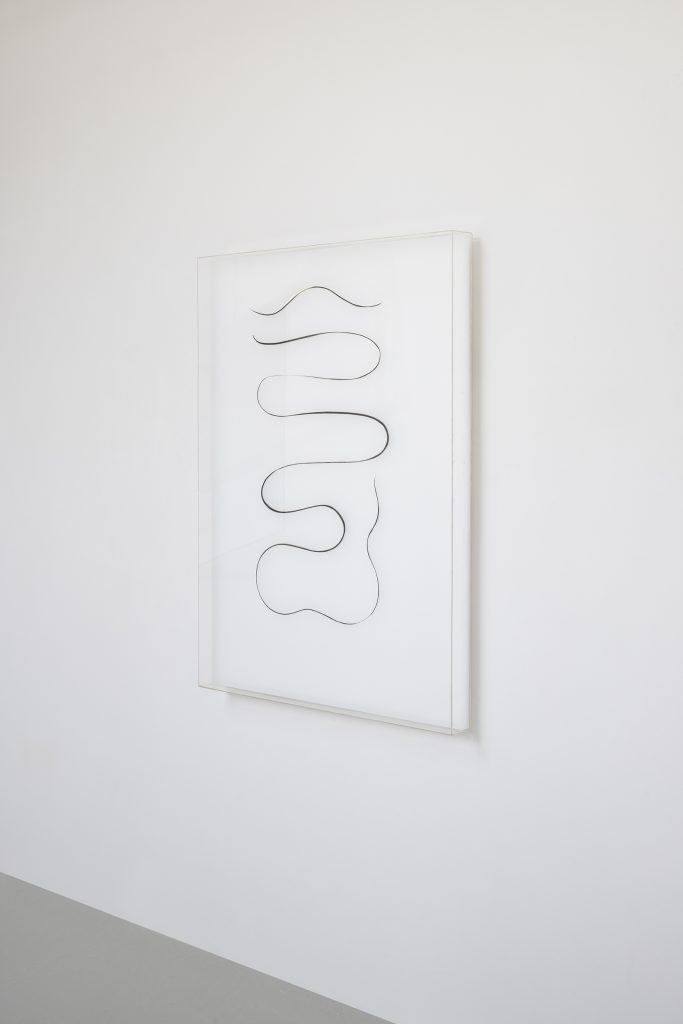
White Heat Diamond, 2024. Installation view

White Heat Diamond, 2024. Installation view

White Heat Diamond, 2024. Installation view

White Heat Diamond, 2024. Installation view

Vapour Curve, 1984. Acrylic, mirror, argon. 116 x 108 x 15.5 cm

White Heat Diamond, 2024. Installation view

White Heat Diamond, 2024. Installation view

Krydset, 2020. Neon. 140 x 120 x 5 cm

White Heat Diamond, 2024. Installation view

Krydset, 2020. Neon. 140 x 120 x 5 cm. Detail

White Heat Diamond, 2024. Installation view

White Heat Diamond, 2024. Installation view

DYN, 1986. Acrylic, argon, mirror, neon.32 x 62,5 x 16 cm

White Heat Diamond, 2024. Installation view

White Heat Diamond, 2024. Installation view
Photography Jan Søndergaard
Gallery hours Tuesday – Friday 12 noon – 5 pm Saturday 12 noon – 3 pm
Frederiksholms Kanal 28A 1220 Copenhagen K +45 22994301
Tyra Tingleff
Your Silence Awakens the Madness in Me
01 March – 06 April
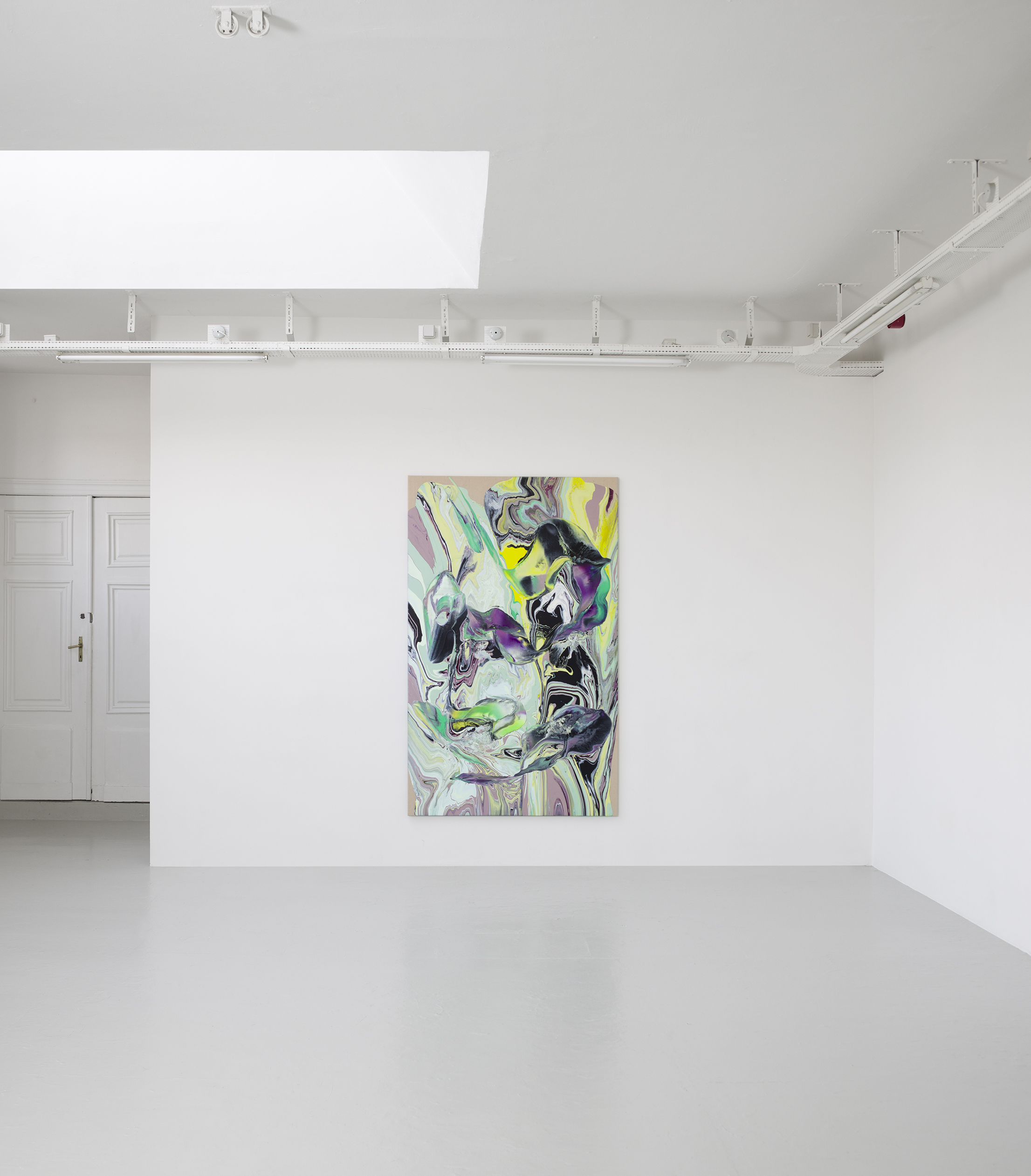
Your Silence Awakens the Madness in Me, 2024. Installation view

Your Silence Awakens the Madness in Me, 2024. Installation view
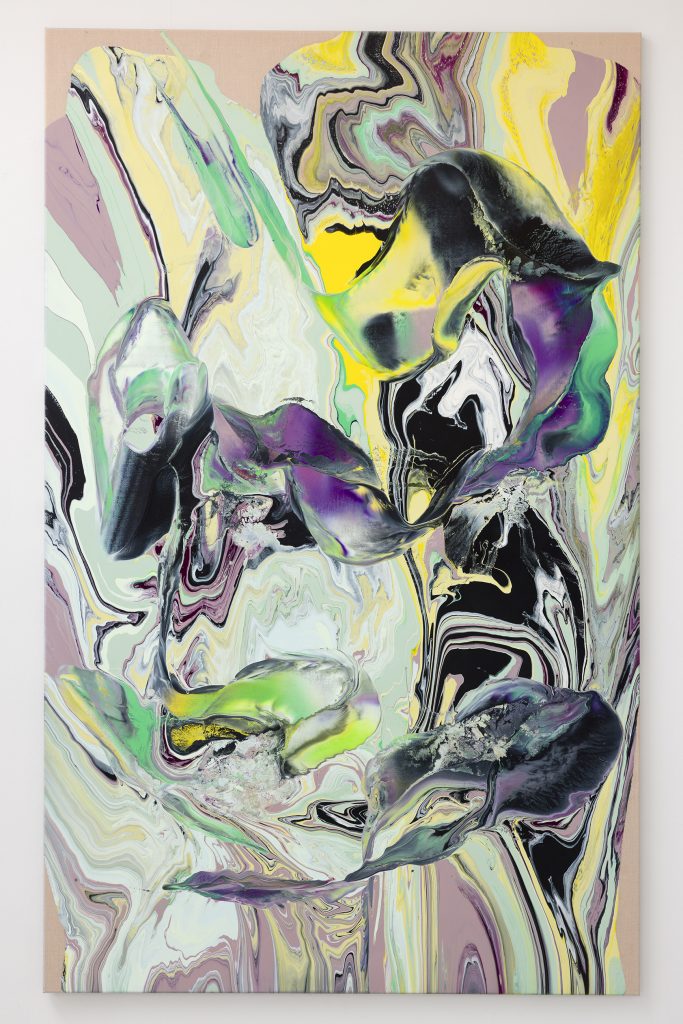
Home is my body, 2023. Oil on raw linen. 210 x 130 cm
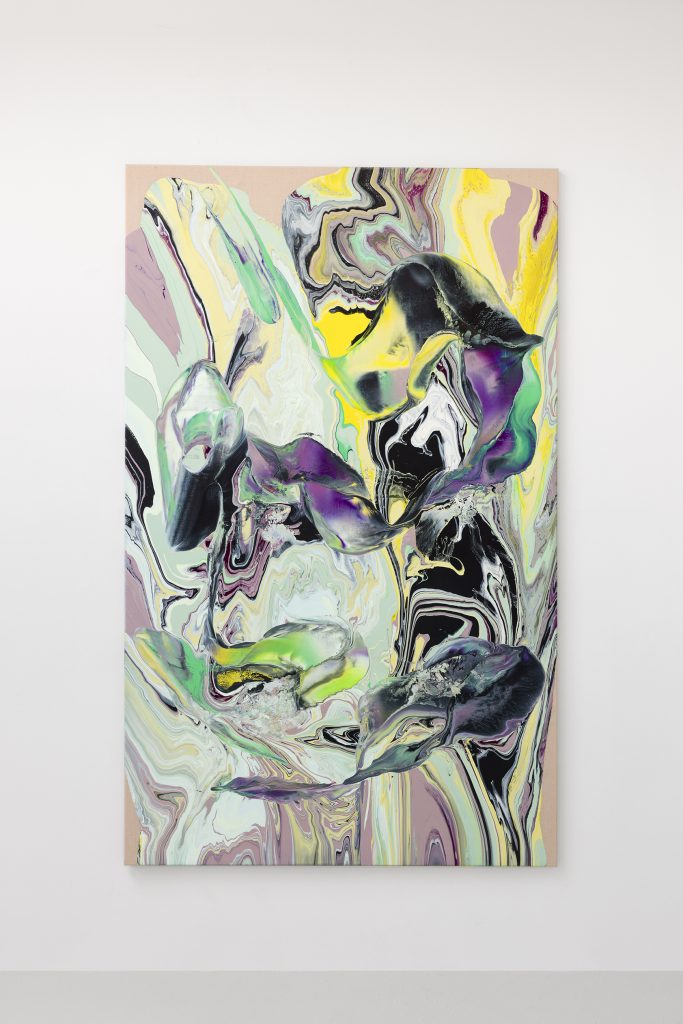
Your Silence Awakens the Madness in Me, 2024. Installation view

Your Silence Awakens the Madness in Me, 2024. Installation view
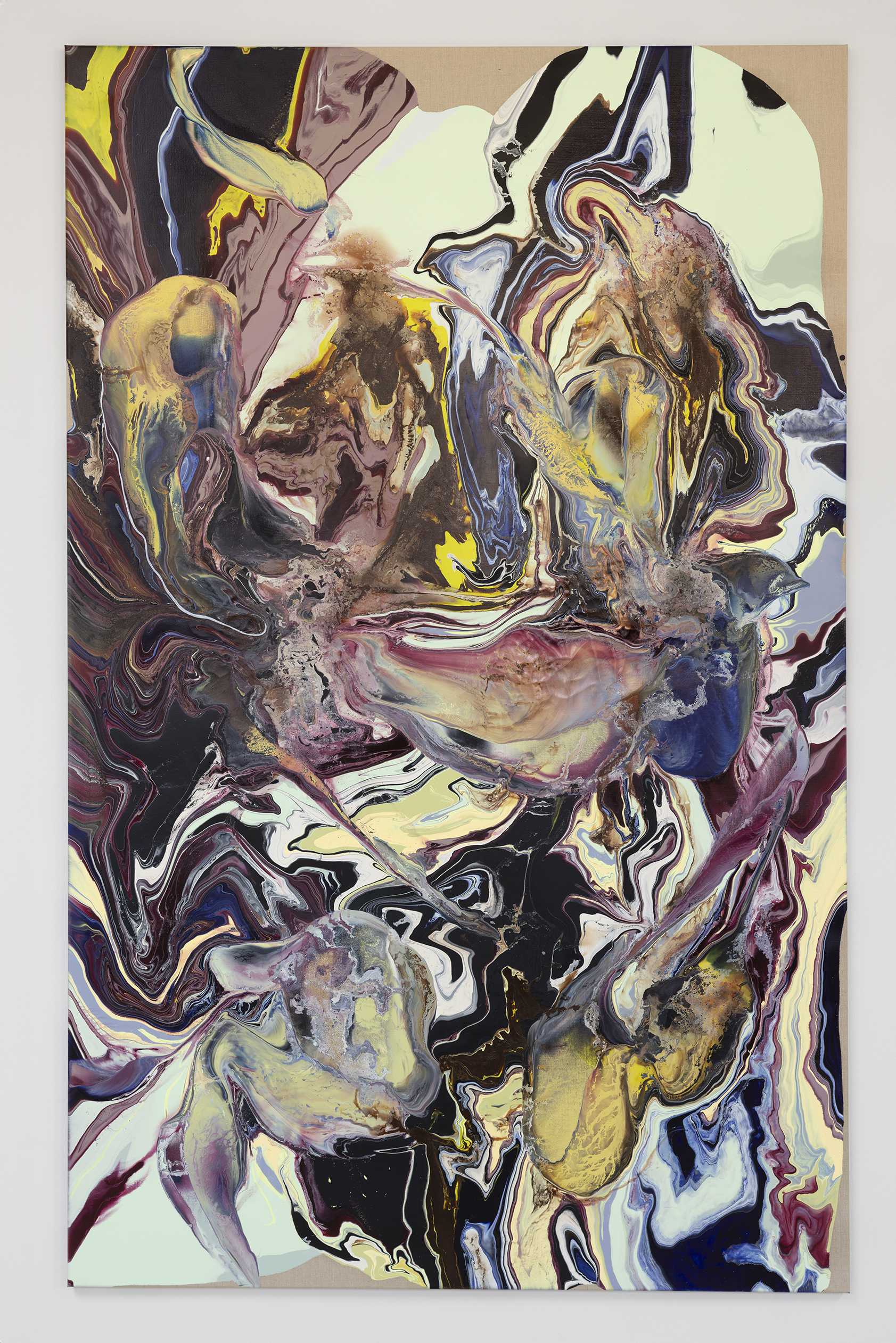
I offer you a peace your war doesn’t want, 2023. Oil on raw linen. 210 x 130 cm

Your Silence Awakens the Madness in Me, 2024. Installation view
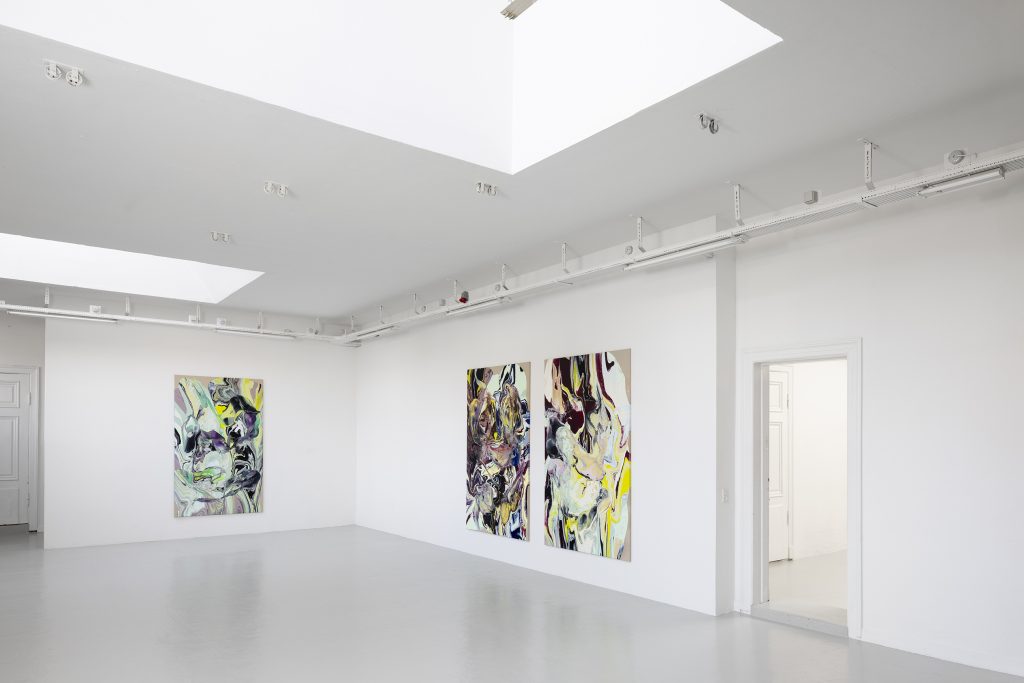
Your Silence Awakens the Madness in Me, 2024. Installation view
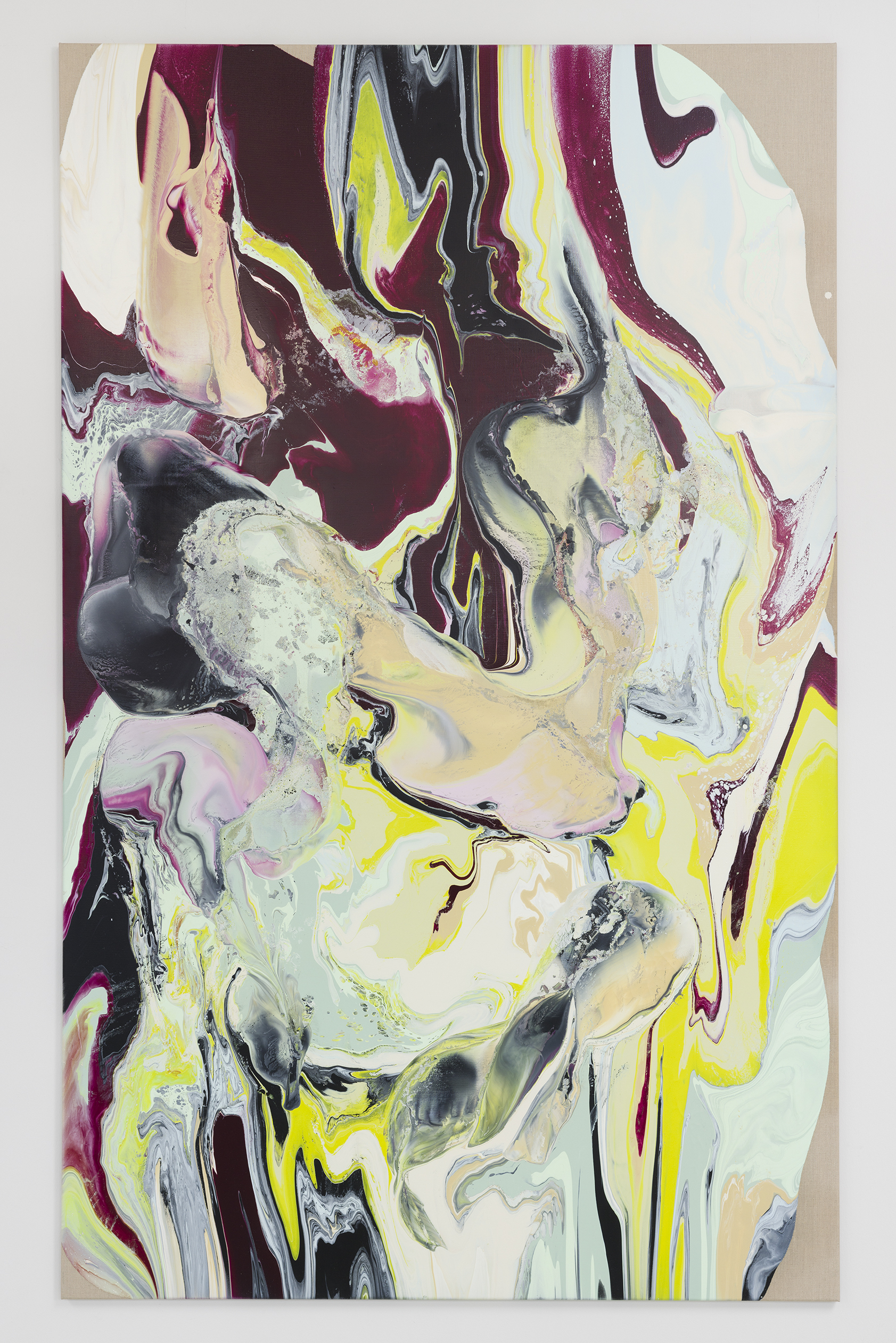
Space brain, period pain, 2023. Oil on raw linen. 210 x 130 cm

Your Silence Awakens the Madness in Me, 2024. Installation view

Your Silence Awakens the Madness in Me, 2024. Installation view
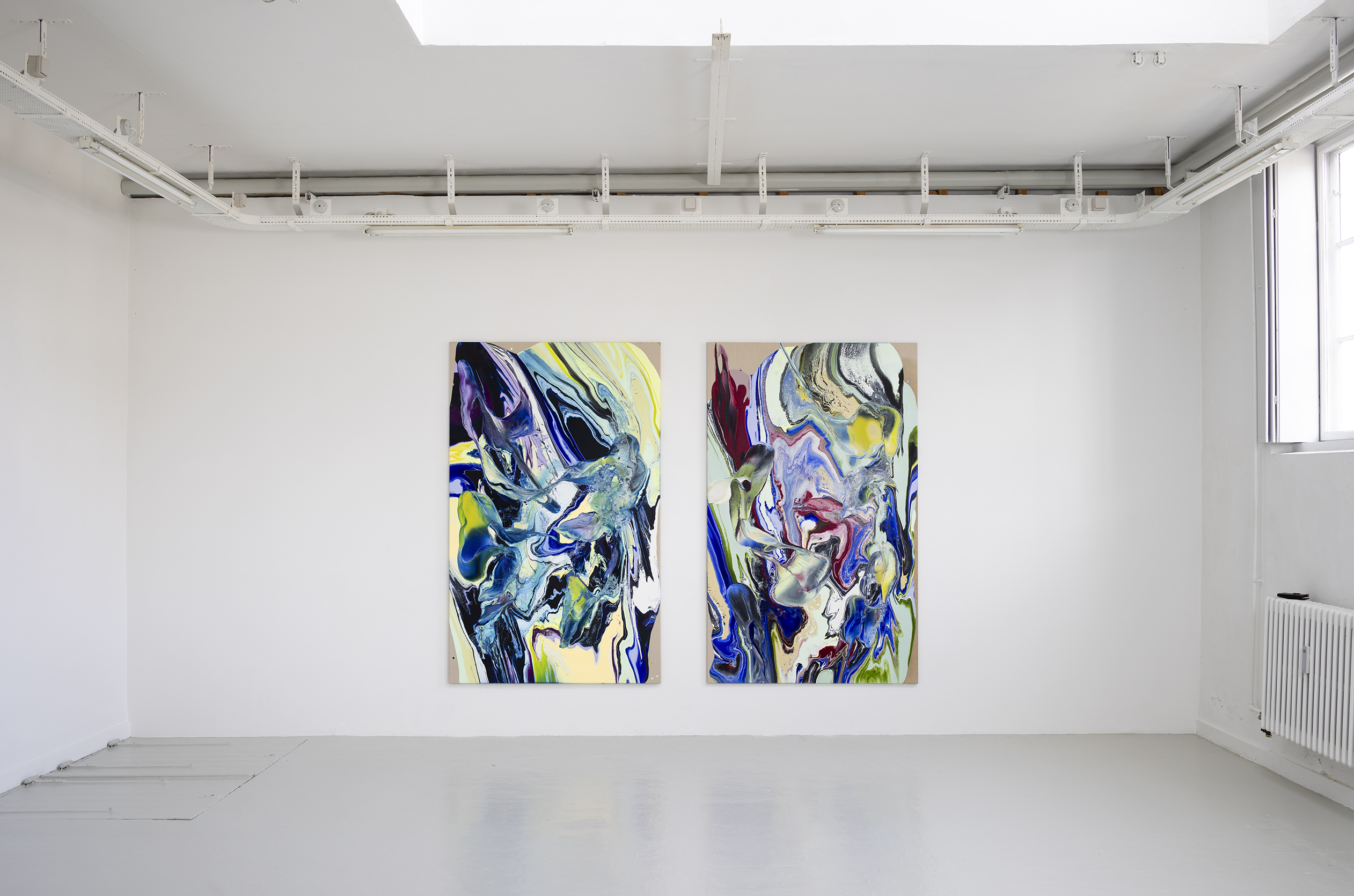
Your Silence Awakens the Madness in Me, 2024. Installation view

Your Silence Awakens the Madness in Me, 2024. Installation view
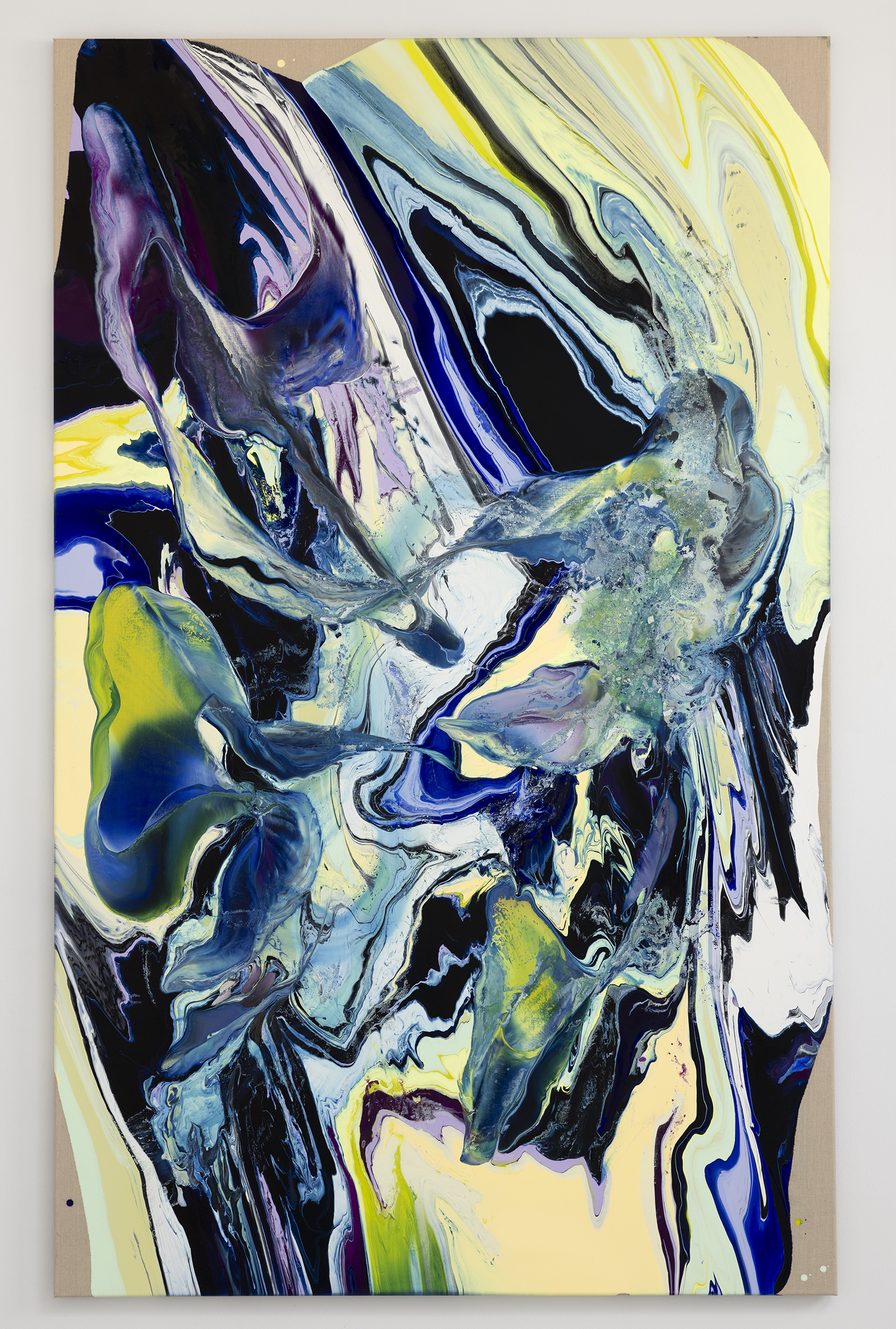
You spent your time wasting mine, 2023. Oil on raw linen. 210 x 130 cm

Your Silence Awakens the Madness in Me, 2024. Installation view

Thorned, stuck, cramped up, 2023. Oil on raw linen. 210 x 130 cm

Your Silence Awakens the Madness in Me, 2024. Installation view

Your Silence Awakens the Madness in Me, 2024. Installation view

Your Silence Awakens the Madness in Me, 2024. Installation view

Your Silence Awakens the Madness in Me, 2024. Installation view
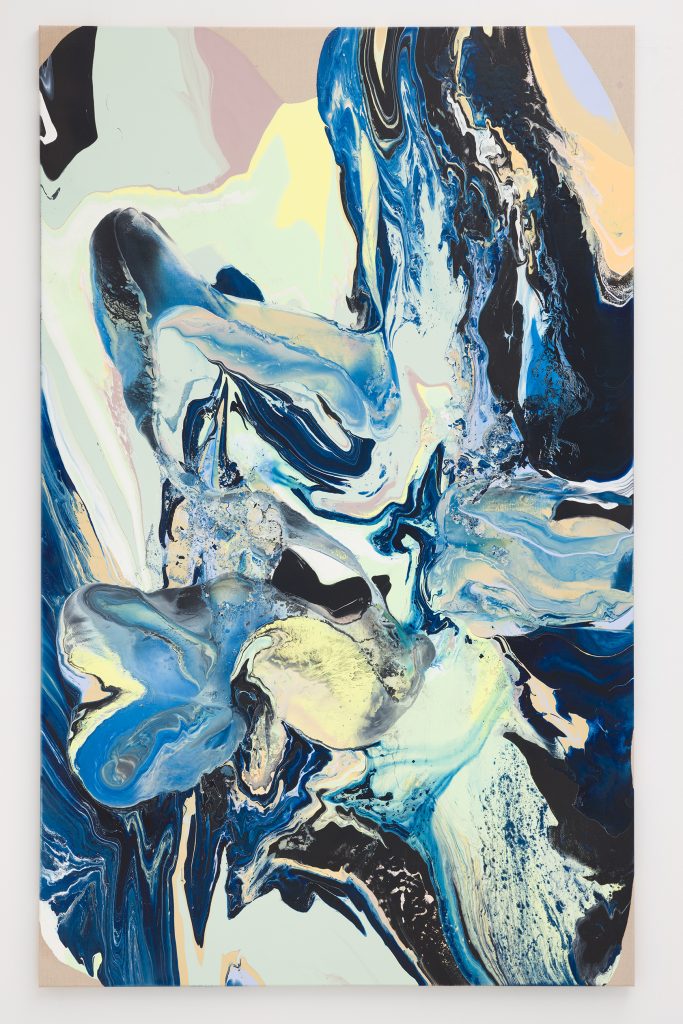
Desperate shout for communication, 2023. Oil on raw linen. 210 x 130 cm
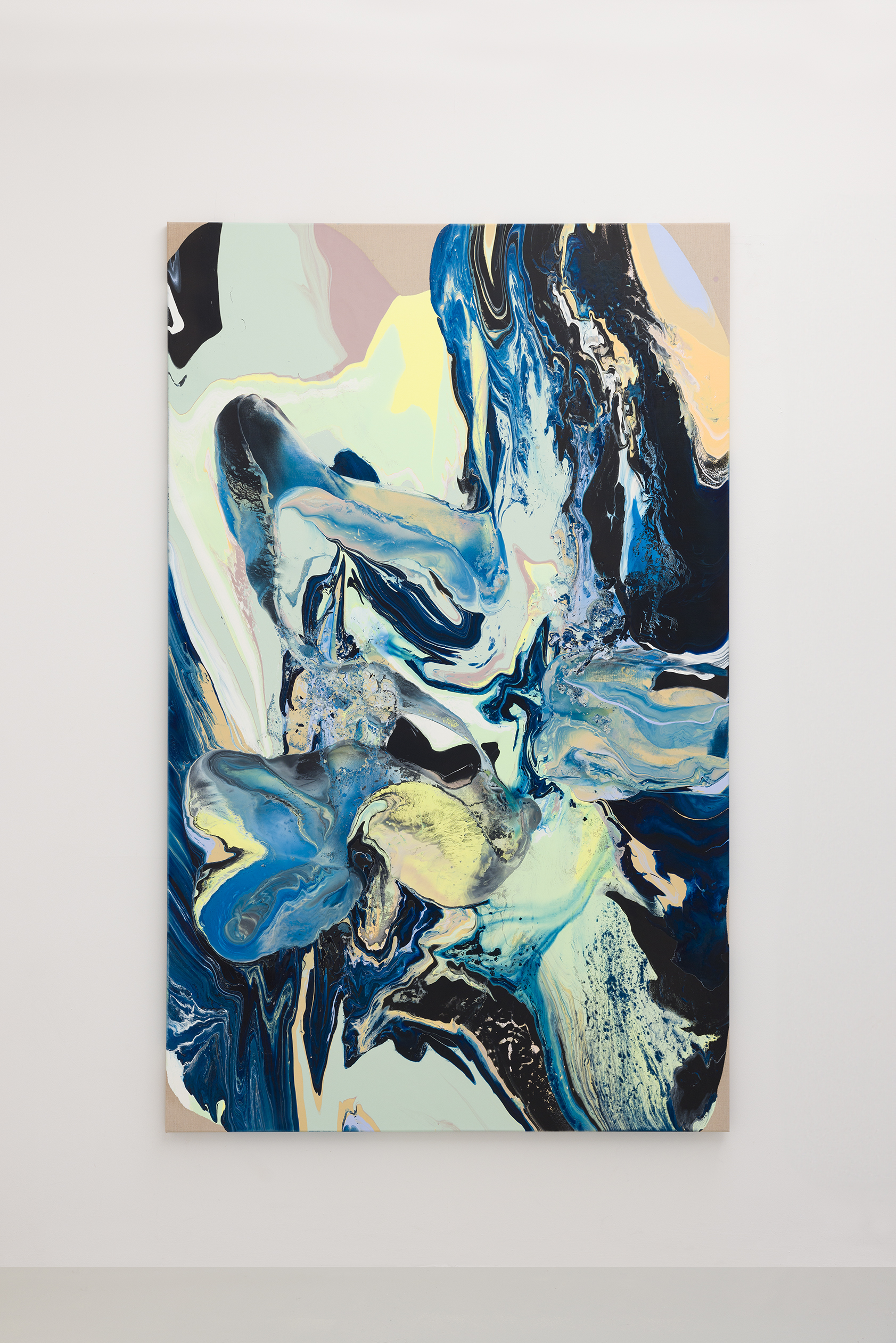
Your Silence Awakens the Madness in Me, 2024. Installation view

You’re not part of my story, 2023. Oil on raw linen. 210 x 130 cm

Your Silence Awakens the Madness in Me, 2024. Installation view

Relentless craving, 2023. Oil on raw linen. 210 x 130 cm

Your Silence Awakens the Madness in Me, 2024. Installation view
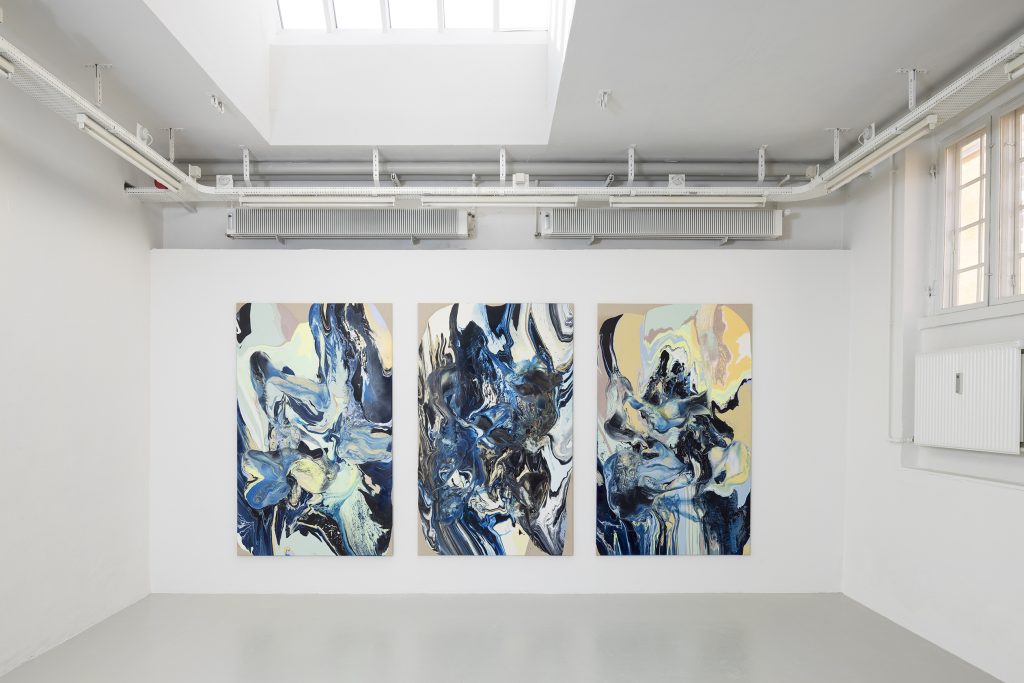
Your Silence Awakens the Madness in Me, 2024. Installation view
Photography Jan Sondergaard
Gallery hours Tuesday – Friday 12 noon – 5 pm Saturday 12 noon – 3 pm
Frederiksholms Kanal 28A 1220 Copenhagen K +45 22994301

Post Magic Hands
Anna Zacharoff
17 November – 22 december 2023

Post Magic Hands, 2023. Installation view

Post Magic Hands, 2023. Installation view

Double Date, 2023. Installation view

Double Date, 2023. Oil paint and pigments on linen canvas. 118 x 186 cm

Post Magic Hands, 2023. Installation view

Tennis, 2023. Oil paint and pigments on linen canvas. 190 x 140 cm

Tennis, 2023. Installation view

The Drama, 2023. Oil paint and pigments on linen canvas. 118 x 186 cm

The Drama, 2023. Installation view

The One, 2023. Installation view

The One, 2023. Oil paint and pigments on linen canvas. 190 x 290 cm

The One, 2023. Installation view

Post Magic Hands, 2023. Installation view

Post Magic Hands, 2023. Installation view

Post Magic Hands, 2023. Installation view

Spice Girls, 2023. Oil paint and pigments on linen canvas. 50 x 90 cm

Spice Girls, 2023. Installation view

Post Magic Hands, 2023. Installation view

All Pawns On Board, 2023. Oil paint and pigments on linen canvas . 60 x 50 cm

All Pawns On Board, 2023. Installation view

Lucky You, 2023. Oil paint and pigments on linen canvas. 50 x 60 cm

Lucky You, 2023. Installation view

After Eight, 2023. Oil paint and pigments on linen canvas. 50 x 60 cm

After Eight, 2023. Installation view

Six Pack, 2023. Oil paint and pigments on linen canvas. 60 x 50 cm
Photography Jan Sondergaard
Gallery hours Tuesday – Friday 12 noon – 5 pm Saturday 12 noon – 3 pm
Frederiksholms Kanal 28A 1220 Copenhagen K +45 22994301


Paris Internationale 2023
Zoe Barcza
Louis Scherfig
17 – 22 October
17 rue du Faubourg Poissonière, Paris
Frederiksholms Kanal 28A 1220 Copenhagen K +45 22994301

Hidden Song
Delia Gonzalez
2 June – 8 July
 Hidden Song, 2023. Installation view
Hidden Song, 2023. Installation view
 Hidden Song, 2023. Installation view
Hidden Song, 2023. Installation view

Hidden Song, 2023. Installation view

Hidden Song, 2023. Installation view

Hidden Song, 2023. Installation view

Hidden Song, 2023. Installation view

Hidden Song, 2023. Installation view

Hidden Song, 2023. Installation view
 Hidden Song, 2023. Installation view
Hidden Song, 2023. Installation view
 Hidden Song, 2023. Installation view
Hidden Song, 2023. Installation view
 Horse Follows Darkness, 2023. Installation view
Horse Follows Darkness, 2023. Installation view
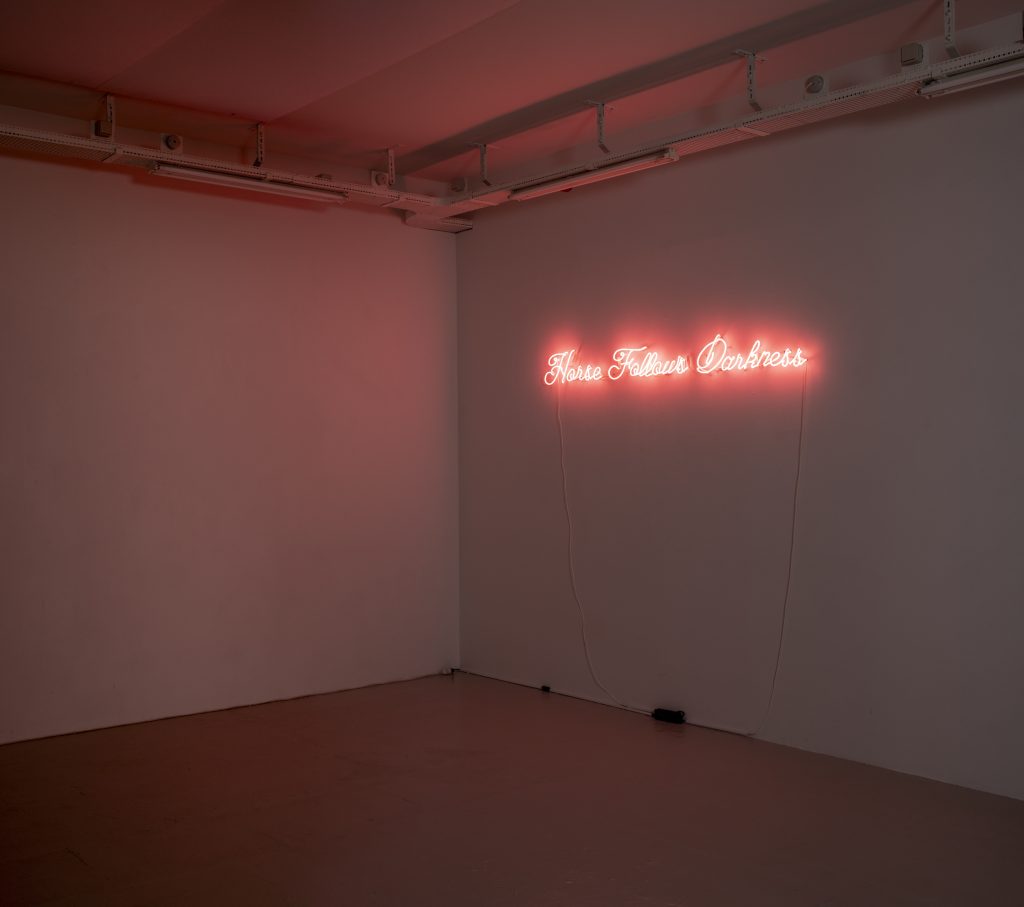 Horse Follows Darkness, 2023. Installation view
Horse Follows Darkness, 2023. Installation view
 Horse Follows Darkness, 2023. Installation view
Horse Follows Darkness, 2023. Installation view

Horse Follows Darkness, 2023. Installation view
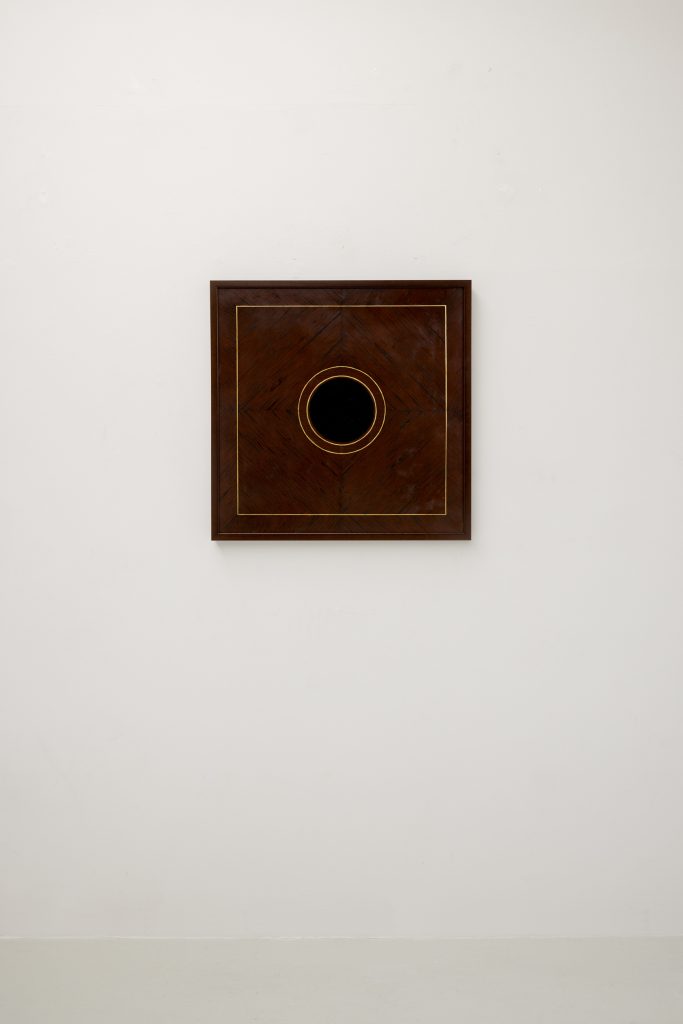 Roulette, 2023. Installation view
Roulette, 2023. Installation view
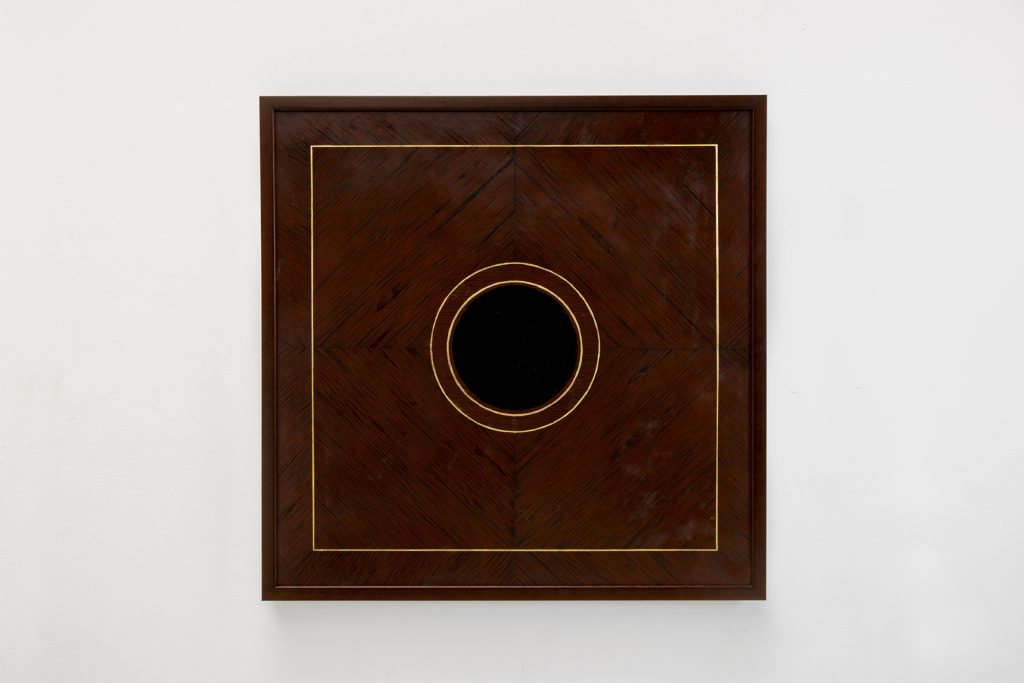 Roulette, 2023. Installation view
Roulette, 2023. Installation view

Roulette, 2023. Installation view
Photography Jan Sondergaard
Gallery hours Tuesday – Friday 12 noon – 5 pm Saturday 12 noon – 3 pm
join our mailing list
info@biancadalessandro.com
Frederiksholms Kanal 28A 1220 Copenhagen K +45 22994301

Original Sins
Louis Scherfig
14 April – May 20

Original Sins, 2023. Installation view

Sightseer 8, 2023. Chainmail, acrylic glass, print on foil, paint, PVC, lights, cable .Dimensions variable

Sightseer 3 (Renaissance Noob), 2023. Chainmail, styrofoam, paint, varnish, PVC, lights, cable. Dimensions variable

Sightseer 9, 2023. Chainmail, PVC, print on foil, paint, lights, cable. Dimensions variable

Sightseer 7, 2023. Chainmail, acrylic glass, bubble wrap, paint, varnish, PVC, lights, cable. Dimensions variable

Original Sins, 2023. Installation view

Original Sins, 2023. Installation view

Original Sins, 2023. Installation view

Original Sins, 2023. PVC, print on foil, lights, cable, wood. 200 x 240 cm

Original Sins, 2023. Installation view

Original Sins, 2023. Installation view

Blue Marble Hotel, 2023, Acrylic glass, paint, print on foil, lights, cable, 200 x 170 cm

Blue Marble Hotel, 2023, Acrylic glass, paint, print on foil, lights, cable, 200 x 170 cm (detail)

Dissociation Hotel, 2023. Acrylic glass, print on foil, metal, lights, cable. 140 x 40 x 30 cm

Original Sins, 2023. Installation view

esc, 2023, Acrylic glass, paint, print on foil, lights, cable, 103 x 205 x 15 cm

Original Sins, 2023. Installation view

Original Sins, 2023. Installation view

Reader, 2023, Print on foil, varnish, acrylic glass, 27.8 x 30 cm

Original Sins, 2023. Installation view

Original Sins, 2023. Installation view

Theme Song, 2023, Print on foil, varnish, acrylic glass, wood, paint, 91.5 x 51.4 x 24.8 cm

Theme Song, 2023, Print on foil, varnish, acrylic glass, wood, paint, 91.5 x 51.4 x 24.8 cm (detail)

Original Sins, 2023. Installation view
Photography Jan Sondergaard
Gallery hours Tuesday – Friday 12 noon – 5 pm Saturday 12 noon – 3 pm
Frederiksholms Kanal 28A 1220 Copenhagen K +45 22994301

Reflection
Kirsten Lockenwitz
26.January- 25 February 2023

Reflection 2023. Installation view

Shower, 1977. Tempera, oil on canvas. 116,5 x 165,5 cm (incl. frame)

Reflection 2023. Installation view

Reflection 2023. Installation view

Reflection 2023. Installation view

Cousteau, 1977. Acrylic on canvas. 123 x 165,5 cm (incl. frame)

Reflection 2023. Installation view

Reflection 2023. Installation view

Force, ca 1976 – 1977 Acrylic on canvas 81,5 x 65,5 cm

Reflection 2023. Installation view
 Reflection 2023. Installation view
Reflection 2023. Installation view
 Reflection 2023. Installation view
Reflection 2023. Installation view

Himalaya Rose II, 1976. Tempera, oil on canvas. 165,5 x 133,5 cm (incl. frame)

Reflection 2023. Installation view

Reflection 2023. Installation view
 Ommaggio Di Francesco, 1977 Acrylic on canvas 247 x 199 cm (incl. artist frame)
Ommaggio Di Francesco, 1977 Acrylic on canvas 247 x 199 cm (incl. artist frame)

Reflection 2023. Installation view

Reflection 2023. Installation view
Photography Jan Sondergaard
Gallery hours Tuesday – Friday 12 noon – 5 pm Saturday 12 noon – 3 pm
Frederiksholms Kanal 28A 1220 Copenhagen K +45 22994301

Descent
Olga Pedan, Charlie Froud
30 September – 5 November, 2022

Descent 2022. Installation view

Charlie Froud. Untitled, 2022. Walnut frame, beech, ochre gesso. 90 x 80 cm

Charlie Froud. Untitled, 2022. Walnut frame, beech, ochre gesso. 90 x 80 cm (detail)

Descent 2022. Installation view

Descent 2022. Installation view

Descent 2022. Installation view

Descent 2022. Installation view

Olga Pedan. Wilting, 2022. Distemper on Aluminum. 50 x 40 cm

Olga Pedan. Cockerel, 2022. Distemper on Aluminum. 50 x 40 cm

Olga Pedan. Head, 2022. Distemper on Aluminum. 50 x 40 cm

Charlie Froud. Mars, 2022. Walnut frame, beech panel, red gesso. 40 x 45 cm

Descent 2022. Installation view

Descent 2022. Installation view

Descent 2022. Installation view

Charlie Froud. Forest Scene, 2022. Walnut frame, beech panel, green gesso. 50 x 40 cm

Descent 2022. Installation view

Descent 2022. Installation view

Olga Pedan. Rabbit Cosmology II, 2022 Distemper on Aluminum 100 x 60 cm

Olga Pedan. Tree, 2022 Distemper on Aluminum 100 x 80 cm

Olga Pedan. Rabbit Cosmology I, 2022 Distemper on Aluminum 100 x 60 cm

Descent 2022. Installation view

Charlie Froud. Untitled, 2022. Cherry frame, beech panel. 45 x 40 cm

Descent 2022. Installation view

Descent 2022. Installation view

Descent 2022. Installation view

Charlie Froud. Untitled, 2022. Black Walnut. 70 x 75 x 50 cm

Charlie Froud. Untitled, 2022. Black Walnut. 70 x 75 x 50 cm (detail)

Charlie Froud. Untitled, 2022. Black Walnut. 70 x 75 x 50 cm

Descent 2022. Installation view

Charlie Froud. Untitled, 2022. Black Walnut. 80 x 60 x 40 cm

Charlie Froud. Untitled, 2022. Black Walnut. 80 x 60 x 40 cm

Charlie Froud. Untitled, 2022. Black Walnut. 80 x 60 x 40 cm (detail)

Charlie Froud. Untitled, 2022. Black Walnut. 80 x 60 x 40 cm

Charlie Froud. Untitled, 2022. Black Walnut. 80 x 60 x 40 cm (detail)

Charlie Froud. Untitled, 2022. Black Walnut. 80 x 60 x 40 cm

Descent 2022. Installation view
Photography Jan Sondergaard
Gallery hours Tuesday – Friday 12 noon – 5 pm Saturday 12 noon – 3 pm
Frederiksholms Kanal 28A 1220 Copenhagen K +45 22994301


Art Athina 2022
Zoe Barcza

Preview
Friday 16 September 12 noon – 8 pm
by personal invitation only
General opening hours
17 – 19 September 12 noon – 9 pm
Art Athina
Zappeion Mansion, Anthens
16 – 19 September 2022
Frederiksholms Kanal 28A 1220 Copenhagen K +45 22994301


Rachel Rossin
Lydia Hauge Sølvberg

Rachel Rossin

Lydia Hauge Sølvberg
13 – 19 June 2022
LISTE – Art Fair Basel
Messe Basel Halle 1.1
Maulbeerstrasse / Ecke Riehenring 113
4058 Basel
20 – 26 September 2021
join our mailing list
Frederiksholms Kanal 28A 1220 Copenhagen K +45 22994301


Rachel Rossin

13 – 26 June 2022
Frederiksholms Kanal 28A 1220 Copenhagen K +45 22994301

Godspeed
Kamil Dossar, Freja Sofie Kirk, Absalon Kirkeby
05 March – 09 April 2022

Godspeed 2022. Installation view

Absalon Kirkeby. Untitled, 2018. Inkjet print on Enhanced Matt Paper, aluminum mounted, custom framed. 172,3 x 117 cm. Edition 1/2 + 1 AP

Godspeed 2022. Installation view

Absalon Kirkeby. Kommune, 2020. Inkjet print on Canson Baryta Prestige, dibond mounted, custom framed. 168,2 x 113 cm. Edition 1/2 + 1 AP

Kamil Dossar. Iconography, 2022. Oil on canvas. 60 x 60 cm

Godspeed 2022. Installation view

Godspeed 2022. Installation view

Kamil Dossar. Index, 2022. Oil on canvas. 183 x 152 cm

Absalon Kirkeby. Edderkop, 2021. Inkjet print on Canson Baryta Prestige, dibond mounted, custom framed. 151 x 114 cm. Edition 1/2 + 1 AP

Godspeed 2022. Installation view
 Godspeed 2022. Installation view
Godspeed 2022. Installation view

Godspeed 2022. Installation view

Godspeed 2022. Installation view

Godspeed 2022. Installation view

Godspeed 2022. Installation view

Godspeed 2022. Installation view

Freja Sofie Kirk. Killing Kidding Colliding, 2022 . HD video, sound, smartglass. 07:30 min. Dimensions variable. Edition 1/3 + 1 AP

Freja Sofie Kirk. Killing Kidding Colliding, 2022 . HD video, sound, smartglass. 07:30 min. Dimensions variable. Edition 1/3 + 1 AP

Godspeed 2022. Installation view

Godspeed 2022. Installation view
 Godspeed 2022. Installation view
Godspeed 2022. Installation view
Photo Jan Sondergaard
Gallery hours Tuesday – Friday 12 noon – 5 pm Saturday 12 noon – 3 pm
join our mailing list
Frederiksholms Kanal 28A 1220 Copenhagen K +45 22994301

Amitai Romm
Arc Eye
8 October – 18 December 2021

Arc Eye 2021. Installation view

Arc Eye 2021. Installation view

Arc Eye 2021. Installation view

Arc Eye 2021. Installation view

Arc Eye 2021. Installation view

Arc Eye 2021. Installation view

Arc Eye 2021. Installation view

Angel, 2018. Inkjet print and pencil on paper. 20 x 15 cm

Arc Eye 2021. Installation view

Arc Eye 2021. Installation view

Angel, 2017-2021. Various media on paper. 20 x 15 cm

Arc Eye 2021. Installation view

Underdefined, 2018-2020. Ink and ballpoint pen on paper. 45 x 37 cm

Underdefined, 2018-2020. Ink and ballpoint pen on paper. 45 x 37 cm

Underdefined, 2018-2020. Ink and ballpoint pen on paper. 45 x 37 cm

Underdefined, 2018-2020. Ink and ballpoint pen on paper. 45 x 37 cm

Arc Eye 2021. Installation view

Emitter, 2021. Copper-plated steel, metal-halide lamp, cables, and fittings. Dimensions variable

Arc Eye 2021. Installation view

Arc Eye 2021. Installation view

Arc Eye 2021. Installation view

Arc Eye 2021. Installation view

Analyst, 2018. Photogravure on paper. 32 x 27 cm

Analyst, 2018-2021. Inkjet print and various media on paper. 30 x 43 cm

Analyst, 2021. Inkjet print and UV print on dibond. 20 x 30 cm

Arc Eye 2021. Installation view
Photo Malle Madsen
Gallery hours Wednesday – Friday 12 noon – 6 pm Saturday 12 noon – 3 pm
join our mailing list
Frederiksholms Kanal 28A 1220 Copenhagen K +45 22994301

Steffen Jørgensen
Rikard Thambert

Steffen Jø¸rgensen
Booth 34
Liste Showtime – Online Viewing Room

Rikard Thambert
Sculpture Piazza IX

LISTE – Art Fair Basel
Messe Basel Halle 1.1
Maulbeerstrasse / Ecke Riehenring 113
4058 Basel
20 – 26 September 2021
Preview
Monday 20 September 10 am – 6 pm
by personal invitation only
General opening hours
20 September 6 – 20 pm
21 – 25 September 11 am – 8 pm
join our mailing list
Frederiksholms Kanal 28A 1220 Copenhagen K +45 22994301
Zoe Barcza
Birth Refusal
27 May – 3 July 2021

Birth Refusal, 2021. Installation view

Subculture Beyotch, 2021. Acrylic, vinyl paint, enamel and collage on canvas. 200 x 170 cm

Subculture Beyotch, 2021. Acrylic, vinyl paint, enamel and collage on canvas. 200 x 170 cm (detail)

Subculture Beyotch, 2021. Acrylic, vinyl paint, enamel and collage on canvas. 200 x 170 cm (detail)

Birth Refusal, 2021. Installation view

Birth Refusal, 2021. Installation view

Polycule Cringe, 2021. Acrylic, vinyl paint and collage on canvas, artist’s frame. 121 x 101 cm

Polycule Cringe, 2021. Acrylic, vinyl paint and collage on canvas, artist’s frame. 121 x 101 cm (detail)

Birth Refusal, 2021. Installation view

Birth Refusal, 2021. Installation view

A Satire, 2021. Acrylic, vinyl paint, and collage on canvas. 160 x 130 cm

A Satire, 2021. Acrylic, vinyl paint, and collage on canvas. 160 x 130 cm (detail)

Birth Refusal, 2021. Installation view

A Neurotic Obsession For Rigor, 2021. Acrylic, vinyl paint and collage on canvas, artist’s frame. 160 x 90 cm

A Neurotic Obsession For Rigor, 2021. Acrylic, vinyl paint and collage on canvas, artist’s frame. 160 x 90 cm (detail)

A Neurotic Obsession For Rigor, 2021. Acrylic, vinyl paint and collage on canvas, artist’s frame. 160 x 90 cm (detail)

Birth Refusal, 2021. Installation view

Open-ended (Superstition Is the Fruit of United Idiots and the Hope for Strange Powers), 2021.
Acrylic, vinyl paint and collage on canvas, artist’s frame (detail). 90 x 160 cm
 Open-ended (Superstition Is the Fruit of United Idiots and the Hope for Strange Powers), 2021.
Open-ended (Superstition Is the Fruit of United Idiots and the Hope for Strange Powers), 2021.
Acrylic, vinyl paint and collage on canvas, artist’s frame (detail). 90 x 160 cm (detail)

Open-ended (Superstition Is the Fruit of United Idiots and the Hope for Strange Powers), 2021.
Acrylic, vinyl paint and collage on canvas, artist’s frame (detail). 90 x 160 cm

Birth Refusal, 2021. Installation view

Birth Refusal, 2021. Installation view

Birth Refusal, 2021. Installation view

Nosebleed Velvet Vegan 8, 2021. Lil’ Daddy Roth metal flake, collage, and acrylic on plexiglass. 50 x 70 cm

Nosebleed Velvet Vegan 9, 2021. Lil’ Daddy Roth metal flake, collage, and acrylic on plexiglass. 50 x 70 cm

Nosebleed Velvet Vegan 10, 2021. Lil’ Daddy Roth metal flake, collage, and acrylic on plexiglass. 50 x 70 cm

Nosebleed Velvet Vegan 11, 2021. Lil’ Daddy Roth metal flake, collage, and acrylic on plexiglass. 50 x 70 cm

Birth Refusal, 2021. Installation view
Photo: Jan Sondergaard
Gallery hours Wednesday – Friday 12 noon – 6 pm Saturday 12 noon – 3 pm
join our mailing list
Frederiksholms Kanal 28A 1220 Copenhagen K +45 22994301

Rikard Thambert
Lactic Acid
3 March – 10 April 2021
Gallery hours Wednesday – Friday 12 noon – 6 pm Saturday 12 noon – 3 pm

Lactic Acid, 2021. Installation View

Stray Cat, 2021. Bronze, diabase. 188 x 37 x 46 cm (detail)

Stray Cat, 2021. Bronze, diabase. 188 x 37 x 46 cm (detail)

Stray Cat, 2021. Bronze, diabase. 188 x 37 x 46 cm

Stray Cat, 2021. Bronze, diabase. 188 x 37 x 46 cm

Stray Cat, 2021. Bronze, diabase. 188 x 37 x 46 cm

Stray Cat, 2021. Bronze, diabase. 188 x 37 x 46 cm

Stray Cat, 2021. Bronze, diabase. 188 x 37 x 46 cm (detail)

Lactic Acid, 2021. Installation view

The Shadow, 2021 Bronze, diabase 103 x 92 x 55 cm Ed. 1/2 + 1AP

The Shadow, 2021 Bronze, diabase 103 x 92 x 55 cm Ed. 1/2 + 1AP

The Shadow, 2021 Bronze, diabase 103 x 92 x 55 cm Ed. 1/2 + 1AP

Lactic Acid, 2021. Installation view

The Shadow, 2021 Bronze, diabase 103 x 92 x 55 cm Ed. 1/2 + 1AP (detail)

Lactic Acid, 2021. Installation view

Lactic Acid, 2021. Installation view

Lactic Acid, 2021. Installation view

Canal, 2021 Bronze, diabase 160 x 33 x 56 cm (detail)

Canal, 2021 Bronze, diabase 160 x 33 x 56 cm (detail)

Lactic Acid, 2021. Installation view

Canal, 2021 Bronze, diabase 160 x 33 x 56 cm (detail)

Canal, 2021 Bronze, diabase 160 x 33 x 56 cm

Canal, 2021 Bronze, diabase 160 x 33 x 56 cm

Canal, 2021 Bronze, diabase 160 x 33 x 56 cm (detail)

Lactic Acid, 2021. Installation view

Lactic Acid, 2021. Installation view

Spike, 2021 Bronze, diabase 178 x 32 x 39 cm (detail)

Spike, 2021 Bronze, diabase 178 x 32 x 39 cm

Spike, 2021 Bronze, diabase 178 x 32 x 39 cm

Spike, 2021 Bronze, diabase 178 x 32 x 39 cm

Spike, 2021 Bronze, diabase 178 x 32 x 39 cm

Spike, 2021 Bronze, diabase 178 x 32 x 39 cm (detail)

Lactic Acid, 2021. Installation view
Photography Jan Sondergaard
—
Covid-19 safety measures
Please note that a limited number of visitors may enter the gallery at one time.
We ask that you wear a face mask upon entering and throughout the duration of your visit.
join our mailing list
Frederiksholms Kanal 28A 1220 Copenhagen K +45 22994301
Gallery hours Wednesday – Friday 12 noon – 6 pm Saturday 12 noon – 3 pm

Willy Ørskov
Open Archive
Friday 11 – 19 December, 2020
Gallery hours
Wednesday – Friday 12 noon – 5 pm, Saturday 12 noon – 3 pm

Willy Ørskov, 1963. Foto: Gregers Nielsen
Willy Ørskov: Open Archive
In 2020 the artist Willy Ørskov would have turned 100 years old. On this occasion, Bianca D’Alessandro is pleased to present the project Willy Ørskov: Open Archive.
The project presents the large photographic archive that Ørskov’s partner Grethe Grathwol left behind at her death. The archive documents Ørskov’s work and exhibition activities from the late 50s and onwards. It contains a large amount of previously unpublished material.
The archive will be reviewed and cataloged for the duration of the project, which hasn’t been done before. The audience is invited into this process, where there will be a presentation of selected material. It will be possible for visitors to contribute to the archive with material in the form of photographs, letters, printed matter, etc.
The project not only celebrates the centenary of Ørskov’s birth but is also the initiation of a larger initiative to disseminate Ørskov’s work in all its aspects: sculpture, theory, and teaching. The mapping of the large archive is the first phase in a more comprehensive dissemination project and will serve as a basis for future projects, which include an anthology of Ørskov’s work and an online archive of Ørskov’s works and exhibitions.
Thank you to Thomas Bagge for making the material available for the project.
The dissemination project about Ørskov was initiated by Bianca D’Alessandro and art historian Philip Pihl. A future anthology about Ørskov is prepared in collaboration with the publisher Strandberg Publishing. The project is expected to be completed in 2022.
join our mailing list
Frederiksholms Kanal 28A 1220 Copenhagen K +45 22994301
Gallery hours Wednesday – Friday 12 noon – 6 pm Saturday 12 noon – 3 pm
Covid-19 safety measures
Please note that a limited number of visitors may enter the gallery at one time.
We ask that you wear a face mask upon entering and throughout the duration of your visit.
Louis Scherfig
Noob Renaissance
7 November – 19 December 2020

Noob Renaissance, 2020. Installation view

Noob Renaissance, 2020. Installation view

Noob Renaissance, 2020. Installation view

I Smoke Eyes, 2020. Acrylic glass, light reflector, permanent marker, print on foil, UV spray, acrylic coating. 100 x 75 cm

I Smoke Eyes, 2020. Acrylic glass, light reflector, permanent marker, print on foil, UV spray, acrylic coating. 100 x 75 cm (detail)

Enjoy Your Gravity, 2020. Acrylic glass, light reflector, permanent marker, print on foil, UV spray, acrylic coating. 100 x 75 cm

Enjoy Your Gravity, 2020. Acrylic glass, light reflector, permanent marker, print on foil, UV spray, acrylic coating. 100 x 75 cm (detail)

Noob Renaissance, 2020. Installation view

Zodiac Prototype 1, 2020. Acrylic glass, light reflector, permanent marker, model figures, print on foil, UV spray, epoxy, acrylic coating. 79 x 38 cm

Zodiac Prototype 1, 2020. Acrylic glass, light reflector, permanent marker, model figures, print on foil, UV spray, epoxy, acrylic coating. 79 x 38 cm

Noob Renaissance, 2020. Installation view

Zodiac Prototype 4, 2020. Acrylic glass, light reflector, permanent marker, model figures, print on foil, UV spray, epoxy, acrylic coating. 85 x 47 cm

Zodiac Prototype 4, 2020. Acrylic glass, light reflector, permanent marker, model figures, print on foil, UV spray, epoxy, acrylic coating. 85 x 47 cm

Noob Renaissance, 2020. Installation view

Noob Renaissance, 2020. Installation view

Safe Guards, 2020. Foam cardboard, bees, wood, metal, spray paint, acrylic, PVC, model figures. 32 x 43 cm

Noob Renaissance, 2020. Installation view

Oxygen, 2020. Foam cardboard, bees, wood, metal, spray paint, acrylic, PVC, model figures. 32 x 44 cm

Noob Renaissance, 2020. Installation view

Oxygen, 2020. Foam cardboard, bees, wood, metal, spray paint, acrylic, PVC, model figures. 32 x 44 cm (detail)

Noob Renaissance, 2020. Installation view

Noob Renaissance, 2020. Installation view

Noob Renaissance, 2020. Installation view

Noob Renaissance, 2020. Installation view

Noob Renaissance, 2020. Installation view

Lovesick Data, 2020. Acrylic glass, light reflector, permanent marker, print on foil, UV spray, acrylic coating. 50 x 75 cm

Noob Renaissance, 2020. Installation view

Broke Pluto, Crashed. Styrofoam, paint, acrylic,, epoxy, metal, lights, cables. ˜ 30 cm

Broke Pluto, Crashed. Styrofoam, paint, acrylic,, epoxy, metal, lights, cables. ˜ 30 cm (detail)

Story Pools , 2020. Styrofoam, paint, acrylic varnish, model figures, glass, print on foil, epoxy, metal, lights, cables. 40 cm

Story Pools , 2020. Styrofoam, paint, acrylic varnish, model figures, glass, print on foil, epoxy, metal, lights, cables. 40 cm (detail)

World of Extremely Bad Eureka, 2020. Styrofoam, paint, varnish, model figures, epoxy, metal, lights, cables. ø 50cm

World of Extremely Bad Eureka, 2020. Styrofoam, paint, varnish, model figures, epoxy, metal, lights, cables. ø 50 cm (detail)

Noob Renaissance, 2020. Installation view

Noob Renaissance, 2020. Installation view

Narrator, 2020. Acrylic glass, print on foil, UV spray, varnish, cardboard. 25 x 24 cm

Battery World, 2020. Styrofoam, paint, varnish, toy figure, batteries, epoxy, metal, lights, cables. ø 50 cm

Story Pools, 2020. Styrofoam, paint, varnish, model figures, glass, print on foil, epoxy, metal, lights, cables. ø 30 cm (detail)

Story Pools, 2020. Styrofoam, paint, varnish, model figures, glass, print on foil, epoxy, metal, lights, cables. ø 30 cm

Story Pools, 2020. Styrofoam, paint, varnish, model figures, glass, print on foil, epoxy, metal, lights, cables. ø 30 cm (detail)

Noob Renaissance, 2020. Installation view

Welcome to the Noob Renaissance, 2020. Styrofoam, paint, varnish, PVC, print on foil, epoxy, metal, lights, cables. ø 30 cm

Welcome to the Noob Renaissance, 2020. Styrofoam, paint, varnish, PVC, print on foil, epoxy, metal, lights, cables. ø 30 cm (detail)

Lemurian Time Pools, 2020. Styrofoam, paint, varnish, model figures, glass, print on foil, epoxy, metal, lights, cables. ø 40 cm

Lemurian Time Pools, 2020. Styrofoam, paint, varnish, model figures, glass, print on foil, epoxy, metal, lights, cables. ø 40 cm (detail)

Dyson Homesphere, 2020. Styrofoam, paint, acrylic varnish, model figures, PVC, emergency blanket, epoxy, metal, lights, cables. ø 30 cm

Dyson Homesphere, 2020. Styrofoam, paint, acrylic varnish, model figures, PVC, emergency blanket, epoxy, metal, lights, cables. ø 30 cm (detail)

Lyfeform (pulsing), 2020. Styrofoam, paint, varnish, model figures, PVC, print on foil, light reflector, epoxy, metal, lights, cables. ø 50 cm

Lyfeform (pulsing), 2020. Styrofoam, paint, varnish, model figures, PVC, print on foil, light reflector, epoxy, metal, lights, cables. ø 50 cm (detail)

Noob Renaissance, 2020. Installation view
Photo, Jan Sondergaard
join our mailing list
Frederiksholms Kanal 28A 1220 Copenhagen K +45 22994301 info@biancadalessandro.com
Gallery hours Wednesday – Friday 12 noon – 6 pm Saturday 12 noon – 3 pm
Covid-19 safety measures
Please note that a limited number of visitors may enter the gallery at one time.
We ask that you wear a face mask upon entering and throughout the duration of your visit.

Steffen Jørgensen
Dirty Hands
22 October – 7 November
Works shown at Paris Internationale Online Viewing Room
now on display at our gallery in Copenhagen
Opening hours
Wednesday – Friday 12 noon – 5 pm & Saturday 12 noon – 3 pm
Lone Haugaard Madsen
Rum#367-Commute
19 September – 31 October 2020

Rum#367-Commute, 2020. Installation view

Rum#367-Commute, 2020. Installation view

Rum#367-Commute, 2020. Installation view

Rum#367-Commute, 2020. Installation view

Rum#367-Commute, 2020. Installation view

Rum#367-Commute, 2020. Installation view

Rum#367-Commute, 2020. Installation view

Rum#367-Commute, 2020. Installation view

Rum#367-Commute, 2020. Installation view

Rum#367-Commute, 2020. Installation view

Rum#367-Commute, 2020. Installation view

Rum#367-Commute, 2020. Installation view

Rum#367-Commute, 2020. Installation view

Rum#367-Commute, 2020. Installation view
Photo, Jan Sondergaard
join our mailing list
info@biancadalessandro.com
Frederiksholms Kanal 28A 1220 Copenhagen K +45 22994301 info@biancadalessandro.com
Gallery hours Wednesday – Friday 12 noon – 6 pm Saturday 12 noon – 3 pm

Phoebe Nesgos

LISTE Showtime
VIP Preview
11 September 10 am CEST – 13 September 2020
Public Launch
14 September 10 am CEST – 20 September 2020
at
liste.ch
LISTE ART FAIR BASEL
“Rewriting Our Imaginations”
2 – 15 September
Poster project “Rewriting Our Imaginations” now on view in public spaces in Basel 2 – 15 September as part of Liste Showtime. Currently displayed on public billboards in over 50 locations in Basel, 72 posters created by 72 artists explore the question of what new imaginations and new futures might look like when something fictional suddenly becomes reality. The posters will be shown and sold online as well as on view in public space in Basel.

Phoebe Nesgos
Nature Morte, 2020. Digital collage. 895 x 1280 mm
Phoebe Nesgos, Oliver Bak, Sean Mullins
Phantom Folly
30 January – 28 March

Phantom Folly, 2020. Installation View

Sean Mullins. I am Abraham, with each step forward the horizon recedes back, 2019. Oil on canvas. 76 x 102 cm

Phantom Folly, 2020. Installation View

Phantom Folly, 2020. Installation View

Oliver Bak. Skeletal Path, 2020. Oil on canvas. 116,5 x 120,5 cm

Phantom Folly, 2020. Installation View

Phantom Folly, 2020. Installation View

Sean Mullins. Every movement towards death is life, 2019. Oil on canvas. 41 x 30,5 cm

Phantom Folly, 2020. Installation View

Oliver Bak. Circe, 2020. Oil on canvas, 131 x 81,4 cm
 Phantom Folly, 2020. Installation View
Phantom Folly, 2020. Installation View

Phantom Folly, 2020. Installation View

Sean Mullins. St. Francis and the Leper, 2019 . Oil on canvas . 43 x 61 cm

Phantom Folly, 2020. Installation View

Phoebe Nesgos. Alice, 2019 . Oil on canvas . 61 x 60,5 cm

Phantom Folly, 2020. Installation View

Phantom Folly, 2020. Installation View

Phantom Folly, 2020. Installation View

Phantom Folly, 2020. Installation View

Phoebe Nesgos. Banishing, 2016 – 2019. Oil on canvas . 172 x 166.5 cm

Phantom Folly, 2020. Installation View

Phantom Folly, 2020. Installation View

Phoebe Nesgos. Skullkeeper, 2020. Oil on canvas. 76 x 101 cm (incl. frame 80,5 x 106 cm)

Phantom Folly, 2020. Installation View

Phantom Folly, 2020. Installation View

Oliver Bak. Slumber Walk, 2019. Oil on canvas. 96,5 x 68,2 cm

Phantom Folly, 2020. Installation View

Phantom Folly, 2020. Installation View
 Phantom Folly, 2020. Installation View
Phantom Folly, 2020. Installation View
Photography Jan Sondergaard
join our mailing list
info@biancadalessandro.com
Frederiksholms Kanal 28A 1220 Copenhagen K +45 22994301 info@biancadalessandro.com
Gallery hours Wednesday – Friday 12 noon – 6 pm Saturday 12 noon – 3 pm
Oliver Bak, Lydia Hauge Sølvberg, Rikard Thambert
Little Soul
31 August – 26 October

Little Soul, 2019. Installation View

Little Soul, 2019. Installation View

Little Soul, 2019. Installation View

Oliver Bak. Blue Corn, 2019. Ceramic plate. Diameter 37 cm

Little Soul, 2019. Installation View

Little Soul, 2019. Installation View

Lydia Hauge Sølvberg. Barok Appelsin, 2017. Bronze. 23 x 12 x 10 cm

Little Soul, 2019. Installation View

Oliver Bak. For Freddie, 2019. Ceramic plate. 33 x 48 cm

Little Soul, 2019. Installation View

Oliver Bak. Little Moth, 2019. Ceramic plate. 33 x 48 cm

Little Soul, 2019. Installation View

Little Soul, 2019. Installation View

Rikard Thambert. Untitled, 2019. Painted plaster. 105 x 39,5 x 39,5 cm

Rikard Thambert. Untitled, 2019. Painted plaster. 105 x 39,5 x 39,5 cm

Rikard Thambert. Untitled, 2019. Painted plaster. 105 x 39,5 x 39,5 cm (detail)

Rikard Thambert. Untitled, 2019. Painted plaster. 105 x 39,5 x 39,5 cm (detail)

Rikard Thambert. Untitled, 2019. Painted plaster. 105 x 39,5 x 39,5 cm (detail)

Rikard Thambert. Untitled, 2019. Painted plaster. 105 x 39,5 x 39,5 cm (detail)

Little Soul, 2019. Installation View

Little Soul, 2019. Installation View

Little Soul, 2019. Installation View

Lydia Hauge Sø¸lvberg. Tegnet Øre, 2017. Plaster. 48 x 25 x 3,5 cm

Little Soul, 2019. Installation View

Oliver Bak. Ghost Lemur, 2019. Ceramic plate. 33 x 48 cm

Little Soul, 2019. Installation View

Little Soul, 2019. Installation View

Lydia Hauge Sø¸lvberg. Blomst, 2016. Sand cast aluminium. 24 x 27 x 25 cm

Little Soul, 2019. Installation View

Little Soul, 2019. Installation View

Little Soul, 2019. Installation View

Oliver Bak. Head, 2019. Ceramic plate. 48 x 33 cm

Little Soul, 2019. Installation View

Little Soul, 2019. Installation View

Little Soul, 2019. Installation View

Little Soul, 2019. Installation View

Tegnet Øre, 2017. Plaster. 43,5 x 28 x 3,5 cm

Little Soul, 2019. Installation View

Little Soul, 2019. Installation View

Oliver Bak. Untitled, 2019. Ceramic plate. 33 x 48 cm

Little Soul, 2019. Installation View

Oliver Bak. Ghost Lemur 2, 2019. Ceramic plate. Diameter 37 cm

Little Soul, 2019. Installation View

Lydia Hauge Sølvberg. Untitled, 2018. Plaster . 39 x 48 x 6 cm

Little Soul, 2019. Installation View

Little Soul, 2019. Installation View
Photography Jan Sondergaard
join our mailing list
info@biancadalessandro.com
Frederiksholms Kanal 28A 1220 Copenhagen K +45 22994301 info@biancadalessandro.com
Gallery hours Wednesday – Friday 12 noon – 6 pm Saturday 12 noon – 3 pm
Zoe Barcza
Louis Scherfig

LISTE – Art Fair Basel
Burgweg 15, 4058 Basel
11 – 16 June 2019
Preview
Monday 10 June by personal invitation only
General opening hours
Tuesday 11 – Saturday 15 June 1 – 9 pm
Sunday 16 June 1 – 6 pm

join our mailing list
info@biancadalessandro.com
Frederiksholms Kanal 28A 1220 Copenhagen K +45 22994301 info@biancadalessandro.com
Gallery hours Wednesday – Friday 12 noon – 6 pm Saturday 12 noon – 3 pm
Kirsten Lockenwitz
9 March – 25 May

PUKKA, 1986. Iron, Blue Rønne Granite, Neon. 100 x 86 x 94 cm

PUKKA, 1986. Iron, Blue Rø¸nne Granite, Neon. 100 x 86 x 94 cm

Kirsten Lockenwitz. Installation view

Kirsten Lockenwitz. Installation view

Kirsten Lockenwitz. Installation view

Kirsten Lockenwitz. Installation view

STOR TOTEM, 2018. Concrete, Argon. 130,5 x 188 x 37,5 cm

Kirsten Lockenwitz. Installation view

Kirsten Lockenwitz. Installation view

GARBHA 1999. Diabase . 33 x 89 x 80,5 cm

Kirsten Lockenwitz. Installation view

CHANDRA HVID, 2018. Gypsum, Argon. 60 x 115 x 25 cm (excl. base)

Kirsten Lockenwitz. Installation view

YALI, 2017. Diabase, Steel. 92 x 215 x 59 cm (foreground)

Kirsten Lockenwitz. Installation view

AEGIS V, 2013. Civic Marble, Diabase. 188 x 86 x 40,5 cm

AEGIS V, 2013. Civic Marble, Diabase. 188 x 86 x 40,5 cm

AEGIS V, 2013. Civic Marble, Diabase. 188 x 86 x 40,5 cm

Kirsten Lockenwitz, 2019. Installation view.
Photography Jan Sondergaard

The exhibition was awarded honoria by the Danish Arts Foundation
Thank you to
Beckett-Fonden, Grosserer L. F. Foghts Fond, Statens Kunstfond

Grosserer L. F. Foghts Fond
The show ends 13 April 2019
Gallery hours Wednesday – Friday 12 noon – 5 pm Saturday 12 noon – 3 pm
Jean Marc Routhier
“To whom it may concern, Jeg vil ønske sommer varede hele året”
18 January – 23 February

“To whom it may concern, Jeg vil ønske sommer varede hele året”, 2019. Installation View

“To whom it may concern, Jeg vil ønske sommer varede hele året”, 2019. Installation View

“To whom it may concern, Jeg vil ønske sommer varede hele året” 2019. Installation View

“To whom it may concern, Jeg vil ønske sommer varede hele året”, 2019. Installation View

“To whom it may concern, Jeg vil ønske sommer varede hele året” 2019 Installation View

Alter, 2019. Epoxy, mixed media. 29 x 35,5 cm

“To whom it may concern, Jeg vil ønske sommer varede hele året”, 2019. Installation View

“To whom it may concern, Jeg vil ønske sommer varede hele året”, 2019. Installation View

“To whom it may concern, Jeg vil ønske sommer varede hele året”, 2019. Installation View

“To whom it may concern, Jeg vil ønske sommer varede hele året”, 2019. Installation View

“To whom it may concern, Jeg vil ønske sommer varede hele året”, 2019. Installation View

Right Of, 2019. Epoxy, mixed media. 72 x 113 cm

Right Of, 2019. Epoxy, mixed media. 72 x 113 cm (detail)

The, 2019. Epoxy, mixed media. 50 x 30 cm

“To whom it may concern, Jeg vil ønske sommer varede hele året”, 2019. Installation View

People to alter, 2019. Epoxy, mixed media. 95 x 84 cm

People to alter, 2019. Epoxy, mixed media. 95 x 84 cm (detail)

“To whom it may concern, Jeg vil ønske sommer varede hele året”, 2019. Installation View

“To whom it may concern, Jeg vil ønske sommer varede hele året” 2019. Installation View

Or, 2019. Epoxy, mixed media. 27 x 27 cm

To, 2019. Epoxy, mixed media. 27 x 27 cm

“To whom it may concern, Jeg vil ønske sommer varede hele året”, 2019. Installation View

“To whom it may concern, Jeg vil ønske sommer varede hele året”, 2019. Installation View

“To whom it may concern, Jeg vil ønske sommer varede hele året”, 2019. Installation View

“To whom it may concern, Jeg vil ønske sommer varede hele året”, 2019. Installation View

Mampfi, 2019. Eatable Euro bills (sugar). 75cm x 55cm

“To whom it may concern, Jeg vil ønske sommer varede hele året”, 2019. Installation View

Mampfi, 2019. Eatable Euro bills (sugar). 75cm x 55cm (detail)

“To whom it may concern, Jeg vil ønske sommer varede hele året”, 2019. Installation View

Abolish it, 2019. Epoxy, mixed media. 58 x 83 cm

“To whom it may concern, Jeg vil ønske sommer varede hele året”, 2019. Installation View

“To whom it may concern, Jeg vil ønske sommer varede hele året”, 2019. Installation View

Hail The New Triad Uprising, 2019. Laserprint. 41,1 x 28,7 cm. Ed.2 + 1AP

Rosalie Cullen, 2019. Laserprint. 41,1 x 28,7 cm. Ed.2 + 1AP

Lamborghini, 2019. Laserprint. 41,1 x 28,7 cm. Ed.2 + 1AP

I do not enjoy, 2019. Laserprint. 41,1 x 28,7 cm. Ed.2 + 1AP

Brennan Graber is the biggest p****, 2019. Laserprint. 41,1 x 28,7 cm. Ed.2 + 1AP

“To whom it may concern, Jeg vil ønske sommer varede hele året”, 2019. Installation View

Tinget, 2019. Cobber, patinated. 700 x 140 cm (detail)

Tinget, 2019. Cobber, patinated. 700 x 140 cm (detail)

“To whom it may concern, Jeg vil ønske sommer varede hele året”, 2019. Installation View

Tinget, 2019. Cobber, patinated. 700 x 140 cm (detail)

Tinget, 2019. Cobber, patinated. 700 x 140 cm (detail)

“To whom it may concern, Jeg vil ønske sommer varede hele året”, 2019. Installation View

“To whom it may concern, Jeg vil ønske sommer varede hele året”, 2019. Installation View

“To whom it may concern, Jeg vil ønske sommer varede hele året”, 2019. Installation View

As you like it, 2019. Crystal, silk, plastic. 8 x 60 x 12 cm

“To whom it may concern, Jeg vil ønske sommer varede hele året” 2019. Installation View
Photography Jan Sondergaard
join our mailing list
info@biancadalessandro.com
Frederiksholms Kanal 28A 1220 Copenhagen K +45 22994301 info@biancadalessandro.com
Gallery hours Wednesday – Friday 12 noon – 5 pm Saturday 12 noon – 3 pm
Amitai Romm, Louis Scherfig, Frederik Worm
New Qualia Hotel
23 November – 22 December

New Qualia Hotel, 2018. Installation View

Louis Scherfig. New Qualia Hotel 3, 2018. Light reflector, styrofoam, paint, acrylic, print, epoxy, lights, cable, wire. 71 cm x 57 cm x 43 cm

New Qualia Hotel, 2018. Installation View

Louis Scherfig . New Qualia Hotel 1, 2018. Light reflector, table legs, acrylic, styrofoam, print, plastic cast, epoxy, lights, cable.

New Qualia Hotel, 2018. Installation View

New Qualia Hotel, 2018. Installation View

Amitai Romm. Untitled, 2018. Pencil and ink on paper. 35,5 x 29 cm

New Qualia Hotel, 2018. Installation View

Frederik Worm . Recreational Gaming, 2018. Steel pitchers, pachinko balls, epoxy, oysters, road paint, co2 cartridges, model trees. 244 cm x 122 cm x 70cm

Frederik Worm . Recreational Gaming, 2018. Steel pitcher, model trees. 20 x 10 x 20 cm

Frederik Worm . Recreational Gaming, 2018. Steel pitcher, model trees. 20 x 10 x 20 cm

New Qualia Hotel, 2018. Installation View

Frederik Worm . Recreational Gaming, 2018. Steel pitcher, oysters. 20 x 10 x 20 cm

Frederik Worm . Recreational Gaming, 2018. Steel pitcher, pebbles. 20 x 10 x 20 cm

New Qualia Hotel, 2018. Installation View

Amitai Romm. Human Security System, 2018. Photogravure. 27 x 33 cm. Ed.1 + 1AP

New Qualia Hotel, 2018. Installation View

New Qualia Hotel, 2018. Installation View

Amitai Romm. Passenger, 2018. Photogravure. 15 x 22 cm. Ed.1 + 1AP

New Qualia Hotel, 2018. Installation View

Frederik Worm. Cinema of the Interface (Copenhill), 2018. Porcelain, glaze, mixed materials. 135 cm x 40 x 40 cm

Frederik Worm. Cinema of the Interface (Copenhill), 2018. Porcelain, glaze, mixed materials. 135 cm x 40 x 40 (detail)

New Qualia Hotel, 2018. Installation View

New Qualia Hotel, 2018. Installation View

New Qualia Hotel, 2018. Installation View

Louis Scherfig. Re-cognize, 2018. Vacuum formed plastic, styrofoam, print, acrylic, epoxy, lights, cable. 75cm x 55cm

Louis Scherfig. Re-cognize (twin), 2018. Vacuum formed plastic, styrofoam, print, acrylic, epoxy, lights, cable. 75cm x 55cm

Louis Scherfig. Re-cognize (twin), 2018. Vacuum formed plastic, styrofoam, print, acrylic, epoxy, lights, cable. 75cm x 55cm (detail)

New Qualia Hotel, 2018. Installation View
Photography Jan Sondergaard
Thank you to Aēsop

join our mailing list
Frederiksholms Kanal 28A 1220 Copenhagen K +45 22994301 info@biancadalessandro.com
Gallery hours Wednesday – Friday 12 noon – 6 pm Saturday 12 noon – 3 pm
Dana Lok
Mind’s Mouth
28 September – 10 November

Mind’s mouth, 2018. Installation View

Continuum Deli, 2018. Oil on canvas. 197 x 175.5 cm

Continuum Deli, 2018. Oil on canvas. 197 x 175.5 cm

Mind’s mouth, 2018. Installation View

Mind’s mouth, 2018. Installation View

Mind’s Eye, Magicians Fingers, 2018. Oil on canvas. 46 x 40.5 cm

Fingers at the Tip of My Words, 2018. Oil on canvas. 46 x 40.5 cm

Mind’s mouth, 2018. Installation View

Walk Cycle, 2018. Oil on canvas. 106 x 111 cm

Crudité, 2018. Oil on canvas. 106 x 111 cm

Minds mouth, 2018. Installation View
 Mind’s mouth, 2018. Installation View
Mind’s mouth, 2018. Installation View

Homunculus I, 2018. Oil on canvas. 197 x 177 cm
 Homunculus II, 2018. Oil on canvas. 197 x 177 cm
Homunculus II, 2018. Oil on canvas. 197 x 177 cm

Mind’s mouth, 2018. Installation View

Mind’s mouth, 2018. Installation View
 Mind’s mouth, 2018. Installation View
Mind’s mouth, 2018. Installation View

Rabbit Part, 2018. Oil on canvas. 46 x 40.5 cm

Piece of Coffee, 2018. Oil on canvas. 46 x 40.5 cm
 Mind’s mouth, 2018. Installation View
Mind’s mouth, 2018. Installation View
Photography Jan Sondergard
Than you to Aesop
join our mailing list
info@biancadalessandro.com
rederiksholms Kanal 28A 1220 Copenhagen K +45 22994301 info@biancadalessandro.com
Gallery hours Wednesday – Friday 12 noon – 6 pm Saturday 12 noon – 3 pm
Zoe Barcza
Big Boy Pants
17 August – 22 September 2018


Discipline Equals Freedom, 2018. Acrylic and vinyl paint on canvas. 200 x 170 cm

Big Boy Pants, 2018. Installation View

Big Boy Pants, 2018. Installation View

Discipline Equals Freedom, 2018. Acrylic and vinyl paint on canvas. 200 x 170 cm (detail)

Discipline Equals Freedom, 2018. Acrylic and vinyl paint on canvas. 200 x 170 cm (detail)

Discipline Equals Freedom, 2018. Acrylic and vinyl paint on canvas. 200 x 170 cm

Big Boy Pants, 2018. Installation View

Big Boy Pants, 2018. Installation View

You Get What You Incentivise, 2018. Acrylic, vinyl paint and collage on canvas. 200 x 170 cm (detail)

You Get What You Incentivise, 2018. Acrylic, vinyl paint and collage on canvas. 200 x 170 cm (detail)

You Get What You Incentivise, 2018. Acrylic, vinyl paint and collage on canvas. 200 x 170 cm (detail)

You Get What You Incentivise, 2018. Acrylic, vinyl paint and collage on canvas. 200 x 170 cm

Big Boy Pants, 2018. Installation View

Big Boy Pants, 2018. Installation View

Losers Have Goals Winners Have Systems, 2018. Acrylic, vinyl paint and collage on canvas. 200 x 170 cm (detail)

Losers Have Goals Winners Have Systems, 2018. Acrylic, vinyl paint and collage on canvas. 200 x 170 cm (detail)

Losers Have Goals Winners Have Systems, 2018. Acrylic, vinyl paint and collage on canvas. 200 x 170 cm

Big Boy Pants, 2018. Installation View

Big Boy Pants, 2018. Installation View

Big Boy Pants, 2018. Installation View

They Say Cancer Causing Chemicals Could Build Up In The Prostate, 2018. Acrylic and vinyl paint on cardboard. 44 x 34 cm (framed)

If Men Do Not Ejaculate Regularly , 2018. Acrylic and vinyl paint on cardboard. 44 x 34 cm (framed)

Big Boy Pants, 2018. Installation View
Photography Jan Sondergard
join our mailing listinfo@biancadalessandro.com
Frederiksholms Kanal 28A 1220 Copenhagen K +45 22994301 info@biancadalessandro.com
Gallery hours Wednesday – Friday 12 noon – 6 pm Saturday 12 noon – 3 pm
Will Benedict and Steffen Jø¸rgensen
The Restaurant
Screening: Tuesday 10 July 3 – 5pm and Wednesday 11 July
12noon – 5pm. Duration 45 min

Screening begins at 8 pm sharp on Thursday 5th and will be shown from Friday
6th till Saturday 7th during regular gallery hours
Thank you to Louisiana Museum of Modern Art

join our mailing list
info@biancadalessandro.com
Frederiksholms Kanal 28A 1220 Copenhagen K +45 22994301 info@biancadalessandro.com
Gallery hours Wednesday – Friday 12 noon – 6 pm Saturday 12 noon – 3 pm
Zoe Barcza
Rikard Thambert

LISTE – Art Fair Basel
Burgweg 15, 4058 Basel, Switzerland
11 – 17 June, 2018
Preview Monday 11 June, 2018
By personal invitation only

join our mailing list
info@biancadalessandro.com
Frederiksholms Kanal 28A 1220 Copenhagen K +45 22994301 info@biancadalessandro.com
Gallery hours Wednesday – Friday 12 noon – 6 pm Saturday 12 noon – 3 pm
Lydia Hauge Sølvberg
15 March – 28 April 2018

Lydia Hauge Sølvberg 2018. Installation View

Kartoffelmandens biceps, 2017. Bronze, sulfur. 17.5 x 8 x 3.5 cm

Lydia Hauge Sølvberg 2018. Installation View

Lydia Hauge Sølvberg 2018. Installation View

Månen spejler sig og indser, 2017. Concrete, black pigment. 180 x 93 cm

Flad stol, 2017. Concrete, black pigment. 93 x 180 x 18 cm

Månen spejler sig og indser, 2017. Fiber concrete, black pigment. 180 x 93 cm (detail)

Flad stol, 2017. Concrete, black pigment. 93 x 180 x 18 cm (detail)

Lydia Hauge Sølvberg 2018. Installation View

Lydia Hauge Sølvberg 2018. Installation View
 Kartoffelmandens musling, 2017. Bronze, patinated. 16 x 10 x 3.5 cm
Kartoffelmandens musling, 2017. Bronze, patinated. 16 x 10 x 3.5 cm

Lydia Hauge Sølvberg 2018. Installation View

Lydia Hauge Sølvberg 2018. Installation View

Lydia Hauge Sølvberg 2018. Installation View

Lydia Hauge Sølvberg 2018. Installation View

Lydia Hauge Sølvberg 2018. Installation View

Kartoffelmandens biceps, 2017. Bronze, sulfur. 17.5 x 8 x 3.5 cm

Lydia Hauge Sølvberg 2018. Installation View
 Kartoffelmandens biceps, 2017. Bronze, sulfur. 23.3 x 13 x 4.2 cm
Kartoffelmandens biceps, 2017. Bronze, sulfur. 23.3 x 13 x 4.2 cm

Lydia Hauge Sølvberg 2018. Installation View

Lydia Hauge Sølvberg 2018. Installation View
 Untitled, 2014. Ceramics. 110 x 80 x 20 cm
Untitled, 2014. Ceramics. 110 x 80 x 20 cm

Lydia Hauge Sølvberg 2018. Installation View

Lydia Hauge Sølvberg 2018. Installation View
Photography Jan Sondergaard
join our mailing list
info@biancadalessandro.com
Frederiksholms Kanal 28A 1220 Copenhagen K +45 22994301 info@biancadalessandro.com
Gallery hours Wednesday – Friday 12 noon – 5 pm Saturday 12 noon – 3 pm
Timothy Furey
A New Body of Work
10 November 2017 – 3 February 2018


Untitled I, 2017. Work on paper, watercolour & silk screen print. 53 x 41 cm

Untitled II, 2017. Work on paper, watercolour & silk screen print. 53 x 41 cm

A New Body of Work, 2017. Installation View

Untitled III, 2017. Work on paper, watercolour & silk screen print. 53 x 41 cm

Untitled IV, 2017. Work on paper, watercolour & silk screen print. 53 x 41 cm

A New Body of Work, 2017. Installation View

Untitled V, 2017. Work on paper, watercolour & silk screen print. 53 x 41 cm

Untitled VI, 2017. Work on paper, watercolour & silk screen print. 53 x 41 cm

A New Body of Work, 2017. Installation View

Untitled VII, 2017. Work on paper, watercolour & silk screen print. 53 x 41 cm

Untitled IX, 2017. Work on paper, watercolour & silk screen print. 53 x 41 cm

A New Body of Work, 2017. Installation View

Untitled VIII, 2017. Work on paper, watercolour & silk screen print. 53 x 41 cm

Juicy Lucy, 2017. Silicone, pigment. Dimensions variable

Juicy Lucy, 2017. Silicone, pigment. Dimensions variable (detail)

A New Body of Work, 2017. Installation View

A New Body of Work, 2017. Installation View

Office Work I, 2017. Digital print on exhibition banner. 210 x 80 cm

Office Work II, 2017. Digital print on exhibition banner. 210 x 80 cm

A New Body of Work, 2017. Installation View

Untitled X, 2017. Work on paper, watercolour & silk screen print. 53 x 41 cm

Untitled XI, 2017. Work on paper, watercolour & silk screen print. 53 x 41 cm

Untitled XII, 2017. Work on paper, watercolour & silk screen print. 53 x 41 cm

Untitled XIII, 2017. Work on paper, watercolour & silk screen print. 53 x 41 cm

A New Body of Work, 2017. Installation View

Untitled XIV, 2017. Work on paper, watercolour & silk screen print. 53 x 41 cm

Untitled XV, 2017. Work on paper, watercolour & silk screen print. 53 x 41 cm

Untitled XVI, 2017. Work on paper, watercolour & silk screen print. 53 x 41 cm

Untitled XVII, 2017. Work on paper, watercolour & silk screen print. 53 x 41 cm

Untitled XVIII, 2017. Work on paper, watercolour & silk screen print. 53 x 41 cm

A New Body of Work, 2017. Installation View

Untitled XIX, 2017. Work on paper, watercolour & silk screen print. 53 x 41 cm

Untitled XX, 2017. Work on paper, watercolour & silk screen print. 53 x 41 cm

Untitled XXI, 2017. Work on paper, watercolour & silk screen print. 53 x 41 cm

Untitled XXII, 2017. Work on paper, watercolour & silk screen print. 53 x 41 cm

Untitled XXIII, 2017. Work on paper, watercolour & silk screen print. 53 x 41 cm

Untitled XXIV, 2017. Work on paper, watercolour & silk screen print. 53 x 41 cm

A New Body of Work, 2017. Installation View
Photography Jan Sondergaard
join our mailing list
info@biancadalessandro.com
Frederiksholms Kanal 28A 1220 Copenhagen K +45 22994301 info@biancadalessandro.com
Gallery hours Wednesday – Friday 12 noon – 5 pm Saturday 12 noon – 3 pm
Dana Lok, Laure Prouvost, Mia Goyette
2 June – 9 September 2017

Dana Lok, Conjurors II, 2016. Oil on canvas. 177 x 171 cm

Dana Lok, Laure Prouvost, Mia Goyette 2017. Installation View

Mia Goyette. The prospect of an end [*DVGW-GW541/DV-7301AT2558 **…], 2016
Concrete, cast ceramic, tinted epoxy resin, various debris, PVC-coated aluminum pipes, aluminum hardware, Dimensions variable

Mia Goyette. The prospect of an end [*DVGW-GW541/DV-7301AT2558 **…], 2016 (detail)
Concrete, cast ceramic, tinted epoxy resin, various debris, PVC-coated aluminum pipes, aluminum hardware, Dimensions variable

Mia Goyette. The prospect of an end [** WO* (SYSTEM:DVGW W543*DW-8501B…], 2016
Concrete, cast ceramic, tinted epoxy resin, various debris, PVC-coated aluminum pipes, aluminum hardware, Dimensions variable

Mia Goyette. The prospect of an end [** WO* (SYSTEM:DVGW W543*DW-8501B…], 2016 (detail)
Concrete, cast ceramic, tinted epoxy resin, various debris, PVC-coated aluminum pipes, aluminum hardware, Dimensions variable

Mia Goyette. The prospect of an end [*TP3161/W.1.4404/TP316/W1.440…], 2016
Concrete, cast ceramic, tinted epoxy resin, various debris, PVC-coated aluminum pipes, aluminum hardware, Dimensions variable

Mia Goyette. The prospect of an end [*TP3161/W.1.4404/TP316/W1.440…], 2016 (detail)
Concrete, cast ceramic, tinted epoxy resin, various debris, PVC-coated aluminum pipes, aluminum hardware, Dimensions variable

Dana Lok, Laure Prouvost, Mia Goyette 2017. Installation View
 Dana Lok, Laure Prouvost, Mia Goyette 2017. Installation View
Dana Lok, Laure Prouvost, Mia Goyette 2017. Installation View
 Dana Lok, Laure Prouvost, Mia Goyette 2017. Installation View
Dana Lok, Laure Prouvost, Mia Goyette 2017. Installation View
 Dana Lok, Conjurors I, 2016. Oil on canvas. 177 x 171 cm
Dana Lok, Conjurors I, 2016. Oil on canvas. 177 x 171 cm
 Dana Lok, Laure Prouvost, Mia Goyette 2017. Installation View
Dana Lok, Laure Prouvost, Mia Goyette 2017. Installation View
 Dana Lok, Laure Prouvost, Mia Goyette 2017. Installation View
Dana Lok, Laure Prouvost, Mia Goyette 2017. Installation View
 Laure Prouvost. Deeper, 2010. Video on monitor, adjustable leg levelers 1.25 min. Edition of 3 plus 2 artist’s proofs
Laure Prouvost. Deeper, 2010. Video on monitor, adjustable leg levelers 1.25 min. Edition of 3 plus 2 artist’s proofs
 Dana Lok, Laure Prouvost, Mia Goyette 2017. Installation View
Dana Lok, Laure Prouvost, Mia Goyette 2017. Installation View
 Dana Lok, Laure Prouvost, Mia Goyette 2017. Installation View
Dana Lok, Laure Prouvost, Mia Goyette 2017. Installation View
 Laure Prouvost. Exhaust Branch, 2015. 200 × 110 × 75 cm
Laure Prouvost. Exhaust Branch, 2015. 200 × 110 × 75 cm
 Laure Prouvost. Exhaust Branch, 2015 (detail)
Laure Prouvost. Exhaust Branch, 2015 (detail)
 Laure Prouvost. Exhaust Branch, 2015 (detail)
Laure Prouvost. Exhaust Branch, 2015 (detail)
 Laure Prouvost. Exhaust Branch, 2015 (detail)
Laure Prouvost. Exhaust Branch, 2015 (detail)
 Dana Lok, Laure Prouvost, Mia Goyette 2017. Installation View
Dana Lok, Laure Prouvost, Mia Goyette 2017. Installation View
 Dana Lok, Laure Prouvost, Mia Goyette 2017. Installation View
Dana Lok, Laure Prouvost, Mia Goyette 2017. Installation View
 Dana Lok, Laure Prouvost, Mia Goyette 2017. Installation View
Dana Lok, Laure Prouvost, Mia Goyette 2017. Installation View
 Dana Lok. Cue, 2016. Oil on canvas. 38 x 45 cm
Dana Lok. Cue, 2016. Oil on canvas. 38 x 45 cm

Mia Goyette. Drain #3 (pink), 2016 . Cast plaster, pigment, chained drainvalve, various debris, epoxy resin. Unique. Dimensions variable
 Dana Lok, Laure Prouvost, Mia Goyette 2017. Installation View.
Dana Lok, Laure Prouvost, Mia Goyette 2017. Installation View.
Photography Jan Sondergaard

join our mailing list
info@biancadalessandro.com
Frederiksholms Kanal 28A 1220 Copenhagen K +45 22994301 info@biancadalessandro.com
Gallery hours Wednesday – Friday 12 noon – 5 pm Saturday 12 noon – 3 pm
Amitai Romm

LISTE – Art Fair Basel
Burgweg 15, 4058 Basel, Switzerland
13 – 18 June, 2017
Preview Monday 12 June, 2017
By personal invitation only

join our mailing list
info@biancadalessandro.com
Frederiksholms Kanal 28A 1220 Copenhagen K +45 22994301 info@biancadalessandro.com
Gallery hours Wednesday – Friday 12 noon – 6 pm Saturday 12 noon – 3 pm
Rikard Thambert
Rebirth
16 December 2016 – 28 January 2017

Planet Sunday, 2016. Plaster, steel, granit. 191 x 63 x 59 cm

Forest Friend, 2016. Plaster, steel, wood, fabric. 181 x 105 x 133 cm

Rebirth 2016/17. Installation View

Rebirth 2016/17. Installation View

Rebirth, 2016. Plaster, steel, wood, acrylic paint. 139 x 62 x 41 cm

Rebirth 2016/17. Installation View

Rebirth 2016/17. Installation View

Rebirth 2016/17. Installation View

Forest Friend, 2016. Plaster, steel, wood, fabric. 181 x 105 x 133 cm (detail)

Forest Friend, 2016. Plaster, steel, wood, fabric. 181 x 105 x 133 cm (detail)

Squirrel Moon, 2016. Plaster. 21 x 6 x 24 cm

Rebirth 2016/17. Installation View

Rebirth 2016/17. Installation View

Rebirth 2016/17. Installation View

Girl, 2016. Plaster. 50 x 50 x 12 cm

Girl, 2016. Plaster. 50 x 50 x 12 cm

Rebirth, 2016/17. Installation View.
Photo Jan Sondergaard
join our mailing list
info@biancadalessandro.com
Frederiksholms Kanal 28A 1220 Copenhagen K +45 22994301 info@biancadalessandro.com
Gallery hours Wednesday – Friday 12 noon – 6 pm Saturday 12 noon – 3 pm
Jankel Alter
Princess
30 September – 12 November 2016

Princess, 2016. Installation view

Princess, 2016. Installation view

Naked Lunch. 2014-2016. Oil on canvas. 186,7 x 135,3 cm

Princess, 2016. Installation View

Die Maskierte. 2016. Oil on canvas. 105,4 x 66 cm

Princess, 2016. Installation View

Tom, 2016. Oil on canvas. 121 x 89 cm

Princess, 2016. Installation view
 Princess, 2016. Installation view
Princess, 2016. Installation view

Outsider. 2014-2015. Oil on canvas. 135,9 x 71,8 cm

Princess, 2016. Installation view

Princess, 2016. Installation view

Galut. 2016. Oil on canvas. 238,8 x 133,4 cm

Princess, 2016. Installation view
 Princess, 2016. Installation view
Princess, 2016. Installation view

Princess, 2016. Installation view

Princess, 2016. Installation view

Safar, 2016. Oil on canvas .127 x 52 cm

Blaue Pille. 2015-2016. Oil on canvas. 134,6 x 88,9 cm

Princess, 2016. Installation View. Photography
Photography Jan Sondergaard
join our mailing list
Frederiksholms Kanal 28A 1220 Copenhagen K +45 22994301 info@biancadalessandro.com
Gallery hours Wednesday – Friday 12 noon – 6 pm Saturday 12 noon – 3 pm
Amitai Romm
How shall the sea be referred to
19 August – 24 September 2016

The earliest compass was invented by the Han Dynasty in 206 BC. It was a piece of naturally-magnetic
lodestone floating on wood. For the first millennia since its invention it was used solely to determine
geographical direction in divination practices. Knowing geographical direction is crucial for geomancy, a
method of divination that interprets patterns formed by tossed handfuls of soil, stones, or sand according
to markings on the ground. Geomancy practices aim to harmonize the directions of buildings, their interior
and spirits of people according to divine geographical ideals. The rituals seek to inspire inner direction by
aligning falling patterns to be interpreted according to greater surrounding geographies.
Named as “foresight by earth” in Greek and “science of the san” in Arabic, geomancy has developed a
world-wide use of compasses. Not until the 1100s was the compass used by the Song dynasty for
geographical navigation to travel over distances. During the 1300s the compass was passed on to Persia
and Europe. The same tool that was used to measure the falling patterns of soil, sand, and rocks, has since
been used as a component in travelling and mapping out the entire planet. The compass added the
certainty of embodied geographical direction as a compound force to human sight.
Every morning the stagemaker bowerbird of the Australian rain forests cuts leaves1. The bird makes them
fall to the ground, and turns them over so that the paler insides contrast with the earth below.
In this way the bird constructs a stage for itself. Directly above, on a creeper or branch, while fluffing its
feathers, it sings a complex song made up from its own notes and, at intervals, imitations of other birds. It
is a complete artist.
Aslak Aamot Kjærulff
______________________
1 Benjamin Bratton, The Stack

How shall the sea be referred to, 2016. Installation View

How shall the sea be referred to, 2016. Installation View

O. 2016 Photogravure. 34 x 24cm

How shall the sea be referred to, 2016. Installation View

How shall the sea be referred to, 2016. Installation view

Untitled. 2016. Photogravure . 50 x 34cm

Untitled. 2016. Photogravure . 50 x 34cm

How shall the sea be referred to, 2016. Installation View

Blind/Compass. 2016. Reinforced PVC, rope, water, laserdisc, neodymium magnets. 355 x 200cm (detail)

Blind/Compass. 2016. Reinforced PVC, rope, water, laserdisc, neodymium magnets. 355 x 200cm (detail)

Blind/Compass. 2016. Reinforced PVC, rope, water, laserdisc, neodymium magnets. 355 x 200cm

Blind/Compass. 2016. Reinforced PVC, rope, water, laserdisc, neodymium magnets. 300 x 200cm

How shall the sea be referred to, 2016. Installation View

Skin. 2016. Photogravure . 34 x 24 cm. Ed. 1 + 1AP

How shall the sea be referred to, 2016. Installation View

How shall the sea be referred to, 2016. Installation View

How shall the sea be referred to, 2016. Installation View

Parable. 2016. Steel. 150 x 150 x 30cm

Parable. 2016. Steel. 150 x 150 x 30cm

How shall the sea be referred to, 2016. Installation View.
Photography Jan Sondergaard
Thank you to Absolut Vodka
join our mailing list
info@biancadalessandro.com
Frederiksholms Kanal 28A 1220 Copenhagen K +45 22994301 info@biancadalessandro.com
Gallery hours Wednesday – Friday 12 noon – 6 pm Saturday 12 noon – 3 pm
Daniel Dewar & Grégory Gicquel, Jill Mulleady, Lin May Saeed, Min Yoon
Trumpets
3 June – 6 July 2016

Daniel Dewar & Grégory Gicquel. Stoneware Vessel n°2, 2016. High-fired stoneware. 37 x 36 x 16 cm

Trumpets, 2016. Installation view

Daniel Dewar & Grégory Gicquel. Stoneware Vessel n°2, 2016. High-fired stoneware. 37 x 36 x 16 cm

Trumpets, 2016. Installation view

Lin May Saeed. Dach der Welt / The Liberation of Animals from their Cages X, 2010
Sculpture, styrofoam, acrylic paint, polyester wool. 100 x 140 x 38 cm

Trumpets, 2016. Installation view

Jill Mulleady. Untitled, 2016. Oil on canvas. 151 x 92 cm

Trumpets, 2016. Installation view

Trumpets, 2016. Installation view

Daniel Dewar & Grégory Gicquel. Stoneware Vessel n°1, 2016. High-fired stoneware. 37 x 36 x 16 cm
 Trumpets, 2016. Installation view
Trumpets, 2016. Installation view
 Trumpets, 2016. Installation view
Trumpets, 2016. Installation view

Lin May Saeed. The Liberation of Animals from their Cages, 2007. Relief covered and painted styrofoam. 100 x 150 x 18 cm

Lin May Saeed. The Liberation of Animals from their Cages, 2007. Relief covered and painted styrofoam. 100 x 150 x 18 cm

Lin May Saeed. Ape in the Reeds, 2006. Steel, covered and painted styrofoam, jute. 57 x 45 x 60cm

Lin May Saeed. Ape in the Reeds, 2006. Steel, covered and painted styrofoam, jute. 57 x 45 x 60cm
 Trumpets, 2016. Installation view
Trumpets, 2016. Installation view

Min Yoon. Untitled, 2015. Pigskin. 43 x 140 cm

Min Yoon. Untitled, 2015. Pigskin. 47 x 168 cm

Min Yoon. Untitled, 2015. Pigskin. 53 x 166 cm

Trumpets, 2016. Installation view.
Photography Jan Sondergaard
Thank you to Absolut Vodka

join our mailing list
Frederiksholms Kanal 28A 1220 Copenhagen K +45 22994301 info@biancadalessandro.com
Gallery hours Tuesday – Friday 12 noon – 6 pm Saturday 12 noon – 3 pm
Dreamfair New York
Tiril Hasselknippe and Lea von Wintzingerode
3 – 8 May 2016
Dream is a series of online international art fairs. Dream fairs exist only on the internet
and are scheduled concurrent with existing art fairs.
Join us at dreamfair.org
Amitai Romm, Jean Marc Routhier, Rikard Thambert, Fredrik Tydén
Tongue
22 January – 27 February 2016

Tongue, 2016. Installation view

Amitai Romm. Primer, 2016. Embroidery, polyester and UV print on jesmonite, aluminum fitting. 45 x 48 x 21 cm

Amitai Romm. Primer, 2016. Embroidery, polyester and UV print on jesmonite, aluminum fitting. 45 x 48 x 21 cm

Rikard Thambert. Trekking Trance, 2016 . Gypsum, granite. 172 x 38 x 66 cm
 Tongue, 2016. Installation view
Tongue, 2016. Installation view

Amitai Romm. Exfoliation, 2015 (detail). Latex impregnated paper, clay, zinc stearate, silicon carbide, phenol resin, aluminum. Dimensions variable

Amitai Romm. Exfoliation, 2015 (detail). Latex impregnated paper, clay, zinc stearate, silicon carbide, phenol resin, aluminum. Dimensions variable

Amitai Romm. Exfoliation, 2015 (detail). Latex impregnated paper, clay, zinc stearate, silicon carbide, phenol resin, aluminum. Dimensions variable

Tongue, 2016. Installation view

Fredrik Tydén. Fragment_9, 2016. White concrete. 30 x 50 x 44 cm

Fredrik Tydén. Palma, 2016. Tie-dyed cotton, polyester. 67 x 31 x 9 cm

Tongue, 2016. Installation view

Jean Marc Routhier. Frammenti ft. Will Evergreen, 2016. Melantin, Styrofoam, Chinese plants, inkjet colour, sugar crystals. Dimensions variable

Jean Marc Routhier. Frammenti ft. Will Evergreen, 2016 (detail). Melantin, Styrofoam, Chinese plants, inkjet colour, sugar crystals

Tongue, 2016. Installation view

Tongue, 2016. Installation view

Jean Marc Routhier. Frammenti ft. Will Evergreen, 2016 (detail). Melantin, Styrofoam, Chinese plants, inkjet colour, sugar crystals

Rikard Thambert. Swedish Simon’s Tear of Wonder At The Doorstep Of A Light, 2015. Pigmented gypsum

Tongue, 2016. Installation view

Jean Marc Routhier. It is me, I am it (happy poems/algorithms), 2016 (detail). Laserprint. 7 sheets each 41,1 x 28,7 cm

Jean Marc Routhier. It is me, I am it (happy poems/algorithms), 2016 (detail). Laserprint. 7 sheets each 41,1 x 28,7 cm

Amitai Romm. Exfoliation, 2015. Latex impregnated paper, clay, zinc stearate, silicon carbide, phenol resin, aluminum. Dimensions variable

Jean Marc Routhier. As you like it, 2016. Crystal, silk, plastic, 6,5 x 66 x 10 cm
 Tongue, 2016. Installation view
Tongue, 2016. Installation view
 Tongue, 2016. Installation view.
Tongue, 2016. Installation view.
Photo Jan Sondergaard
Thank you to Absolut Vodka

join our mailing list
info@biancadalessandro.com
Frederiksholms Kanal 28A 1220 Copenhagen K +45 22994301 info@biancadalessandro.com
Gallery hours Tuesday – Friday 12 noon – 6 pm Saturday 12 noon – 3 pm
Mads Westrup
Circles
13 November – 19 December 2015
…”will carry with us in our memories. This also allows others to implant”…
…”Most are aware that Eskimos have about 200 words to describe snow”…
…”Language itself is one; currency is another, time is yet another, as is mathematics. Often we get so caught up in” …
…”respectfully suggest that perhaps it is time to put them into their proper perspective. It is quite” …
Flecting and Reflecting by Doug Fulcher

Circles
Composed / Partitur by Johannes Lund
Recorded September 2015 in Torup


Ghosts (T.D.T.C.), 2013-15. Oil and pigment on canvas. 209 x 150,5 cm

Circles, 2015. Installation view

Circles, 2015. Installation view

Ghosts (T.D.T.C.), 2013-15. Oil, pigment and steel on canvas. 41 x 34,5 x 3 cm

Ghosts (T.D.T.C.), 2013-15. Oil, pigment and steel on canvas. 41 x 34,5 x 3 cm (detail)

Circles, 2015. Installation view

Circles, 2015. Installation view

Ghosts (T.D.T.C.), 2013-15. Oil, pigment and steel on canvas. 126 x 165 cm

Ghosts (T.D.T.C.), 2013-15. Oil and pigment and steel on canvas. 126 x 165 cm (detail)

Ghosts (T.D.T.C.), 2013-15. Oil, pigment and steel on canvas. 115 x 52 x 3 cm

Ghosts (T.D.T.C.), 2013-15. Oil, pigment and steel on canvas. 40 x 30,5 x 3 cm

Circles, 2015. Installation view

Sketches for statues, 2013-15. Alu-bronze. 44 x 20 x 26 cm & Sketches for statues, 2013-15. Alu-bronze. 41,5 x 21,50 x 13,50 cm

Circles, 2015. Installation view

Circles, 2015. Installation view

Circles, 2015. Installation view
 Circles, 2015. Installation view
Circles, 2015. Installation view

Circles, 2015. Installation view

Ghosts (T.D.T.C.), 2013-15. Oil, pigment and steel on canvas. 41 x 34 x 3 cm

Ghosts (T.D.T.C.), 2013-15. Oil, pigment and steel on canvas. 58 x 68,5 x 3 cm

Ghosts (T.D.T.C.), 2013-15. Oil, pigment and steel on canvas. 149,5 x 160 cm

Ghosts (T.D.T.C.), 2013-15. Oil and pigment on canvas. 58,5 x 68,5 cm

Circles, 2015. Installation view. Photo Jan Sondergaard

Thank you to Absolut Vodka

join our mailing list
Frederiksholms Kanal 28A 1220 Copenhagen K +45 22994301 info@biancadalessandro.com
Gallery hours Tuesday – Friday 12 noon – 6 pm Saturday 12 noon – 3 pm
Tiril Hasselknippe
Tub
18 September – 31 October 2015
The exhibition period has been extended to Sat 7 November
Tub
I’m consumed by the idea that things could have been otherwise. In everything I see its possibility. Even a fractal shift in
meaning reminds me that I am arbitrary, and I seek it, sit with it, an erotics of the ahistorical.
On the gallery floor four balconies lie prone, civic objects in the leaky horror of things misplaced. Something’s not right. A
horror evidenced by the material that loses its meaning. Is there a word for that feeling? Architecture is born into an order,
and whatever shifts by which it becomes disorganized are the work of time or violence. In its aftermath, the subject is a
private detective, a medical doctor, Mister Magoo, thinking of reasons, working out cause and effect.
I’m not sure where the fixation comes from, or what I want from it. The desire can’t explain itself. It’s greedy, and it takes in
much of what I see. I feed it. It grows robust with anachronisms, which I suddenly find poetic, in the way
that people use the word “poetic†to mean a kind of beauty they don’t yet understand.
How do we move into another time? Can we design ourselves? What if class were a flat plane? Can I move apart from, next to my style?
Under the pavement, pavement. Hoaxes, failures, porches, archaeological strata spread out on a continuous thin plane;
softness and speed, echoes, spores, tropes, fonts; not identity but incident and the accumulation of air miles; unmarked solitude absorbing time, bloating to become an environment, indexical euphorias, the unraveling of laughter; a brief history of
escalators; memory manifest, brindled, loosening; a crumpling of automotive glass… (Lisa Robertson,”Soft Architecture: A Manifesto”)
Tess Edmonson

Tub, 2015. Installation view
 Balcony (residency), 2015. Concrete, steel, water, and food colouring. 98 x 125 x 68 cm
Balcony (residency), 2015. Concrete, steel, water, and food colouring. 98 x 125 x 68 cm
 Balcony (residency), 2015. Concrete, steel, water, and food colouring. 98 x 125 x 68 cm (detail)
Balcony (residency), 2015. Concrete, steel, water, and food colouring. 98 x 125 x 68 cm (detail)

Tub, 2015. Installation view
 Balcony (supplies), 2015. Concrete, steel, water, and food colouring. 90 x 90 x 52 cm
Balcony (supplies), 2015. Concrete, steel, water, and food colouring. 90 x 90 x 52 cm
 Balcony (supplies), 2015. Concrete, steel, water, and food colouring. 90 x 90 x 52 cm
Balcony (supplies), 2015. Concrete, steel, water, and food colouring. 90 x 90 x 52 cm

Tub, 2015. Installation view
 Balcony (survival), 2015. Concrete, steel, water, and food colouring. 95 x 99 x 89 cm
Balcony (survival), 2015. Concrete, steel, water, and food colouring. 95 x 99 x 89 cm
 Balcony (survival), 2015. Concrete, steel, water, and food colouring. 95 x 99 x 89 cm
Balcony (survival), 2015. Concrete, steel, water, and food colouring. 95 x 99 x 89 cm

Tub, 2015. Installation view

Tub, 2015. Installation view
 Balcony (intersectionality), 2015. Concrete, steel, water, and food colouring. 86 x 150 x 64 cm
Balcony (intersectionality), 2015. Concrete, steel, water, and food colouring. 86 x 150 x 64 cm
 Balcony
Balcony
(intersectionality), 2015. Concrete, steel, water, and food
colouring. 86 x 150 x 64 cm (detail).
Photo Jan Sondergaard
Thank you to
Danish Art Workshops and Absolut Vodka


join our mailing list
info@biancadalessandro.com
Frederiksholms Kanal 28A 1220 Copenhagen K +45 22994301 info@biancadalessandro.com
Gallery hours Tuesday – Friday 12 noon – 6 pm Saturday 12 noon- 3 pm
Nick Oberthaler
No Subject No Image No Taste No Matter No Grace No Style
7 August – 12 September 2015
The fact that Oberthaler’s geometric abstraction functions as contemporary art is due to a number of strategies the
artist employs in the realization of his work that keeps it from merely perpetuating a historically established style.
One of these strategies involves designing tables, paravents, curtains, partitions and vitrines in an
approach adopted from the critical context-art of the 90s. His wall painting at Bianca D’Alessandro in Copenhagen,
which takes its colour from the facade of the building housing the gallery, is perhaps the most
overt coupling of painting and context-art in Oberthaler’s work.
Mirrors resurface time and again among the materials, stemming from an interest in contextual concerns – mirrors not
only reflect but also, in certain cases, distort. A further strategy for contextualising abstraction is the artist’s use
of representational images. Oberthaler uses borrowed images primarily from magazines and/or online sources, and prints
them in grid format on aluminium panels. The arrangements are reminiscent of the work of Andy Warhol and Peter Roehr. Roehr,
who died in 1968 aged only 23, assembled collages of advertising material in grid format, sizing the selections so that the images
remained intact, and did not assume an abstracted pattern. Oberthaler’s figurative elements are selected not only by
proportion, but also for their high light/shade contrast, rendering them capable of achieving a much more abstract quality.
In terms of surface, Oberthaler’s painted and printed works are almost indistinguishable. The aluminium is painted with a very smooth, polished primer, with inevitable traces from processes such as masking resulting in sharply delineated shapes. Oberthaler not only references representational images as the dominant visual form of today (and using a concreteness very specific to the time of his artistic beginnings),
even his paintings, which often look printed, always stay at least in clear sight/reach of contemporary printing techniques. Thus some
works call to mind pixelated computer graphics or the raster lines of vacuum tube monitors, which are now relegated to the technological past.
For his exhibition at Bianca D’Alessandro he borrows John Cage’s declaration of independence
at the occasion of a Robert Rauschenberg exhibition in 1953, “No Subject, No image, No taste…” referring to all transcendentalism, and much more than just an exhibition title. The assertion of a reality external to the image, Oberthaler seems to be saying, can no longer be a discursive category in post-modernism.
Christoph Bruckner
Nick Oberthaler (Bad Ischl/Austria, 1981) lives and works in Vienna. Recent solo shows include Pièce Dérivée, Galerie Thaddaeus Ropac, Paris (2015); Calculated Reserve (Cur. Pier Paolo Pancotto), Museo Hendrik C. Andersen/Galleria nazionale d’arte moderna, Roma (2014); The blackbird must be flying (together with Thomas Julier), Centre d’art bastille/CAB, Grenoble (2015); Eventuality of an attempt,
KIOSK, Gent (2013); Galerie Emanuel Layr, Vienna (2012) and
Galerie Martin van Zomeren, Amsterdam (2012). Group shows (selection): Rideaux/BLINDS (Cur. Marie de Brugerolle), Institut d’Art Contemporain/FRAC Rhône-Alpes, Villeurbanne/Lyon (2015); Ökonomie der Aufmerksamkeit, Kunsthalle Vienna (2014); Vers une hypothèse (Cur. Andrea Rodriguez Novoa), Francheville, CAC Fort du Bruissin/Programme Résonance – XII Biennale de Lyon, Lyon (2013); Die Sammlung # 4, 21er-Haus / Belvedere Vienna (2013); De leur temps 4: Nantes, Centre d’art contemporain Le Hangar, Nantes (2013); Minimal Myth (Cur. Francesco Stocchi), Museum Boijmans van Beuningen, Rotterdam (2012).

No Subject No Image No Taste No Matter No Grace No Style, 2015. Installation view

Untitled (Propositions), 2015. Offset-print on blueback paper, 59,4 x 42 cm. Edition of 250 / not numbered

No Subject No Image No Taste No Matter No Grace No Style, 2015. Installation view

No Subject No Image No Taste No Matter No Grace No Style, 2015. Installation view

Untitled (Grid), 2015. Protection foil, ink and matte varnish on aluminium, 180 x 100 cm

Untitled (Grid), 2015. Protection foil, ink and matte varnish on aluminium, 180 x 100 cm (detail)

Untitled (Thorvaldsen/The disquieting muses), 2015. Primer, gesso and acrylic on aluminium. 180 x 100 cm
 Untitled (Thorvaldsen/The disquieting muses), 2015. Primer, gesso and acrylic on aluminium. 180 x 100 cm (detail)
Untitled (Thorvaldsen/The disquieting muses), 2015. Primer, gesso and acrylic on aluminium. 180 x 100 cm (detail)
 Untitled (Blind/The Decay), 2015. UV-print on aluminium,180 x 100 cm
Untitled (Blind/The Decay), 2015. UV-print on aluminium,180 x 100 cm
 Untitled (Blind/The Decay), 2015. UV-print on aluminium,180 x 100 cm (detail)
Untitled (Blind/The Decay), 2015. UV-print on aluminium,180 x 100 cm (detail)
 Untitled (NoNoNoNoNoNo), 2015. Primer, gesso, acrylic and offset-print on aluminium, h180 x 100 cm
Untitled (NoNoNoNoNoNo), 2015. Primer, gesso, acrylic and offset-print on aluminium, h180 x 100 cm
 Untitled (NoNoNoNoNoNo), 2015. Primer, gesso, acrylic and offset-print on aluminium, h180 x 100 cm (detail)
Untitled (NoNoNoNoNoNo), 2015. Primer, gesso, acrylic and offset-print on aluminium, h180 x 100 cm (detail)

No Subject No Image No Taste No Matter No Grace No Style, 2015. Installation view

No Subject No Image No Taste No Matter No Grace No Style, 2015. Installation view
 Untitled (for R.R. / I). Aludibond mirrors with protection foil, 1k-glue and dust on black MDF, 2015. 131 x 79 cm
Untitled (for R.R. / I). Aludibond mirrors with protection foil, 1k-glue and dust on black MDF, 2015. 131 x 79 cm
 Untitled (for R.R. / I). Aludibond mirrors with protection foil, 1k-glue and dust on black MDF, 2015. 131 x 79 cm
Untitled (for R.R. / I). Aludibond mirrors with protection foil, 1k-glue and dust on black MDF, 2015. 131 x 79 cm

No Subject No Image No Taste No Matter No Grace No Style, 2015. Installation view
 Untitled (for R.R. / I). Aludibond mirrors with protection foil, 1k-glue and dust on black MDF, 2015. 131 x 79 cm (detail)
Untitled (for R.R. / I). Aludibond mirrors with protection foil, 1k-glue and dust on black MDF, 2015. 131 x 79 cm (detail)

No Subject No Image No Taste No Matter No Grace No Style, 2015. Installation view

No Subject No Image No Taste No Matter No Grace No Style, 2015. Installation view
 Untitled I- VIII (Cph). Work on paper, framed, 2015. Mixed media, dimensions variable. 60 x 42 cm (frame)
Untitled I- VIII (Cph). Work on paper, framed, 2015. Mixed media, dimensions variable. 60 x 42 cm (frame)
 Untitled I – VIII (Cph). Work on paper, framed, 2015. Mixed media, dimensions variable. 60 x 42 cm (frame)
Untitled I – VIII (Cph). Work on paper, framed, 2015. Mixed media, dimensions variable. 60 x 42 cm (frame)
 Untitled I – VIII (Cph). Work on paper, framed, 2015. Mixed media, dimensions variable. 60 x 42 cm (frame)
Untitled I – VIII (Cph). Work on paper, framed, 2015. Mixed media, dimensions variable. 60 x 42 cm (frame)
 Untitled I – VIII (Cph). Work on paper, framed, 2015. Mixed media, dimensions variable. 60 x 42 cm (frame)
Untitled I – VIII (Cph). Work on paper, framed, 2015. Mixed media, dimensions variable. 60 x 42 cm (frame)
 Untitled I – VIII (Cph). Work on paper, framed, 2015. Mixed media, dimensions variable. 60 x 42 cm (frame)
Untitled I – VIII (Cph). Work on paper, framed, 2015. Mixed media, dimensions variable. 60 x 42 cm (frame)
 Untitled I – VIII (Cph). Work on paper, framed, 2015. Mixed media, dimensions variable. 60 x 42 cm (frame)
Untitled I – VIII (Cph). Work on paper, framed, 2015. Mixed media, dimensions variable. 60 x 42 cm (frame)
Photo: Jan Sondergaaard
Thank you to Bundeskanzleramt Österreich,
Austrian Embassy Copenhagen and Absolut Vodka


Frederiksholms Kanal 28A 1220 Copenhagen K +45 22994301 info@biancadalessandro.com
Gallery hours Tuesday – Friday 12 noon – 6 pm Saturday 12 noon – 3 pm
Magnus Andersen
Agrimundo
29 May – 4 July 2015
Press Text
From Regional Educations
2.1. Agriculture and Youth
A. Special funds will be made available through the payment scheme of existing agricultural subsidy channels for young farmers (1) at present in possession of holdings commencing their agricultural activity (2). Beneficiaries are subject to the obligations resulting from the scheme’s contract; funds must be utilised for licensed consulting services in topics set forth in Regulation (Lex) No 1306/213. These include farm certification schemes, compliance with general principles of integrated pest management, and hedging risks of damage caused by natural disasters, adverse climatic events and catastrophic events
B. Young farmers’ oath passed by the executive assembly of the farmers’ association:
I believe in the future of agriculture, with a faith born not of words but of deeds – achievements won by the present and past generations of agriculturists
I believe that to live and work on a good farm or to be engaged in other agricultural pursuits is pleasant as well as challenging.
I believe in leadership from ourselves and respect from others.
I believe in the ability of progressive agriculturists to serve our own and the public interest in producing and marketing the product of our toil. I believe in less dependence on begging and more power in bargaining; in the life abundant and enough honest wealth to help make it so-for others as well as myself.
I believe that agriculture can and will hold true to the best traditions of our life and that I can exert an influence in my home and community which will stand solid for my part in that inspiring task.
– Lorenz, Magnus, Julien, and the FFA
(1) “farmer” means a natural or legal person, or a group of natural or legal persons, regardless of the legal status granted to such group and its members, whose holding is situated within the territorial scope of the laws, as defined in Article 52 AG in conjunction with Articles 349 and 355 FAG, and who exercises an agricultural activity.
(2) “agricultural activity” means production, rearing or growing of agricultural products, including harvesting, milking, breeding animals, and keeping animals for farming purposes. Maintaining an agricultural area in a state, which makes it suitable for grazing or cultivation without preparatory action going beyond usual agricultural methods and machineries
 Harvest Boys, 2015. Acrylic, chalk and lime wood. 98 x 149 cm
Harvest Boys, 2015. Acrylic, chalk and lime wood. 98 x 149 cm
 Agrimundo, 2015. Installation view
Agrimundo, 2015. Installation view

Harvest Boys, 2015. Acrylic, chalk and lime wood. 98 x 149 cm
 Agrimundo, 2015. Installation view
Agrimundo, 2015. Installation view

Fence Piece (Agri), 2015. Acrylic on lime wood. 187,5 x 25 cm
+
Fence Piece (Mundo), 2015. Acrylic on lime wood. 169 x 25 cm

Fence Piece (Agri), 2015. Acrylic on lime wood. 187,5 x 25 cm
+
Fence Piece (Mundo), 2015. Acrylic on lime wood. 169 x 25 cm. (detail)
 Agrimundo, 2015. Installation view
Agrimundo, 2015. Installation view
 Agrimundo, 2015. Installation view
Agrimundo, 2015. Installation view
 Tutorial Map, 2015. Acrylic, chalk and lime wood. 88 x 149 cm
Tutorial Map, 2015. Acrylic, chalk and lime wood. 88 x 149 cm

Tutorial Map, 2015. Acrylic, chalk and lime wood. 88 x 149 cm
 Farming Simulator, 2015. Acrylic, wood, monitor, Farming Simulator (video: 3.21 min). Variable dimensions
Farming Simulator, 2015. Acrylic, wood, monitor, Farming Simulator (video: 3.21 min). Variable dimensions
 Farming Simulator, 2015. Acrylic, wood, monitor, Farming Simulator (video: 3.21 min). Variable dimensions. (detail). vimeo.com/130758528
Farming Simulator, 2015. Acrylic, wood, monitor, Farming Simulator (video: 3.21 min). Variable dimensions. (detail). vimeo.com/130758528
 Farming Simulator, 2015. Acrylic, wood, monitor, Farming Simulator (video). Variable dimensions. (detail)
Farming Simulator, 2015. Acrylic, wood, monitor, Farming Simulator (video). Variable dimensions. (detail)

Crop Converter, 2015. Acrylic, paper mache, wood and canvas. 151 x 268 cm

Crop Converter, 2015. Acrylic, paper mache, wood and canvas. 151 x 268 cm. (detail)
 Agrimundo, 2015. Installation view
Agrimundo, 2015. Installation view
Photo: Jan Sondergaard
Thank you to Absolut Vodka

Frederiksholms Kanal 28A 1220 Copenhagen K +45 22994301 info@biancadalessandro.com
Gallery hours Tuesday – Friday 12 noon – 6 pm Saturday 12 noon – 3 pm
Timothy Furey
“This Days”
10 April – 16 May 2015
Editing Y.
(For T. F.)
*
comment and share to enter community,
enter community to change / edit.
While checking Recent Changes tonight we
noticed a pattern of edits and reverts to this article.
The problem appears to be that someone
(currently editing from 109.76.148.204)
does not want the article to mention Y’s
severe long-term economic decline.
a compromise of wealth
and / or information as it happens
it is very still
in the heart of the descriptive practice
as it ends preparatory work
and begins the act of writing
as it ends preparatory work
and begins the act of painting
blank lines
diluted intentions
as symbols
form adequate systems
to protect the most vulnerable
sufferers, grief is
shaping the abstract,
bending will
*
push
full darkness
down into the objects
images
wake up to
man enchanted
AFAICS there’s no doubt that the town has been blighted
by the effects of globalisation
by a weeping model, contract
in a shared and moderated environment
taking violence
out of certain vocabularies, still forcing
overflowing, grateful
Thanks for engaging here,
Hyde09-
Talk page interaction is always appreciated
from a moment in time-
let’s call it space
and let’s have it calling from all the borders of itself
with words
coming from within the walls,
like visitors from Germany
destruction
poverty
breakthrough
generosity
death!
exhibition
*
KL

This Days. 2015. Installation view
 Sufficient Obstacle I-VIII, 2015. Hazel branch and steel wire. Variable dimensions
Sufficient Obstacle I-VIII, 2015. Hazel branch and steel wire. Variable dimensions

Mr. Ó Cúnasa, 2015. Acrylic and wax dressing on canvas. 172 x 120 cm

This Days. 2015. Installation view

Mr. Pechorin, 2015. Acrylic and wax dressing on canvas. 172 x 120 cm

Mr. B. Traven, 2015. Acrylic and wax dressing on canvas. 172 x 120 cm

This Days. 2015. Installation view

This Days. 2015. Installation view

Outside I-IV, 2015. Hazel branches, canvas, earth pigment, graphite, oil, dirt, eyelet. Variable dimensions
 Sufficient Obstacle I-VIII, 2015. Hazel branch and steel wire. Variable dimensions
Sufficient Obstacle I-VIII, 2015. Hazel branch and steel wire. Variable dimensions Sufficient Obstacle I-VIII, 2015. Hazel branch and steel wire. Variable dimensions
Sufficient Obstacle I-VIII, 2015. Hazel branch and steel wire. Variable dimensions
This Days. 2015. Installation view

Mr. Craven, 2015. Acrylic and wax dressing on canvas. 172 x 120 cm

Mr. Ridolph, 2015. Acrylic and wax dressing on canvas. 172 x 120 cm

Mr. O. Hasard, 2015. Acrylic and wax dressing on canvas. 172 x 120 cm
 Sufficient Obstacle I-VIII, 2015. Hazel branch and steel wire. Variable dimensions
Sufficient Obstacle I-VIII, 2015. Hazel branch and steel wire. Variable dimensions Sufficient Obstacle I-VIII, 2015. Hazel branch and steel wire. Variable dimensions
Sufficient Obstacle I-VIII, 2015. Hazel branch and steel wire. Variable dimensions

This Days. 2015. Installation view

Mr. “Cherub” Swinburne, 2015. Acrylic and wax dressing on canvas. 172 x 120 cm

This Days. 2015. Installation view
 Outside I-IV, 2015. Hazel branches, canvas, earth pigment, graphite, oil, dirt, eyelet. Variable dimensions
Outside I-IV, 2015. Hazel branches, canvas, earth pigment, graphite, oil, dirt, eyelet. Variable dimensions Outside I-IV, 2015. Hazel branches, canvas, earth pigment, graphite, oil, dirt, eyelet. Variable dimensions
Outside I-IV, 2015. Hazel branches, canvas, earth pigment, graphite, oil, dirt, eyelet. Variable dimensions Outside I-IV, 2015. Hazel branches, canvas, earth pigment, graphite, oil, dirt, eyelet. Variabledimensions
Outside I-IV, 2015. Hazel branches, canvas, earth pigment, graphite, oil, dirt, eyelet. Variabledimensions

Frederiksholms Kanal 28A 1220 Copenhagen K +45 22994301 info@biancadalessandro.com
Gallery hours Tuesday – Friday 12 noon – 6 pm Saturday 12 noon-3 pm
Thea Moeller &
Mads Westrup
20 February – 28 March 2015

Thea Moeller & Mads Westrup, 2015. Installation view

Thea Moeller & Mads Westrup, 2015. Installation view

Thea Moeller & Mads Westrup, 2015. Installation view

Thea Moeller. Gerüstkonstruktion/ Lager, 2014 Galvanized steel pipes, Firewood stacking aid, Furniture material, bord, Spray, Lacker

Thea Moeller & Mads Westrup, 2015. Installation view

Thea Moeller. Untitled / Adria Zement, 2014. Steele, Rubber band, board

Thea Moeller. Untitled / Adria Zement, 2014. Steele, Rubber band, board

Thea Moeller & Mads Westrup, 2015. Installation view

Mads Westrup. Kommunal Bue #3, 2014. Oil on canvas. 160 x 120 cm

Mads Westrup. Untitled, 2014. Oil on canvas. 40 x 52 cm

Thea Moeller & Mads Westrup, 2015. Installation view

Thea Moeller & Mads Westrup, 2015. Installation view

Thea Moeller. Camouflage/ Träger, 2014. Steel, wood, floor paint. 16 x 7 x 260 cm

Mads Westrup. Kommunalbue #4, 2014. Oil on canvas. 145 x 175 cm

Mads Westrup. Untitled, 2014. Oil on canvas. 34 x 41,5 cm

Thea Moeller & Mads Westrup, 2015. Installation view.
Photography Jan Sondergaard
Thank you to Absolut Vodka

Frederiksholms Kanal 28A 1220 Copenhagen K +45 22994301 info@biancadalessandro.com
Gallery hours Tuesday – Friday 12 noon – 6 pm Saturday 12 noon – 3 pm
Willy Ørskov
Works on Paper
9 January – 14 February 2015

Works on Paper, 2015. Installation view

Works on Paper, 2015. Installation view
 Untitled, 1984. Bronze. 23 x 28 x 28 cm
Untitled, 1984. Bronze. 23 x 28 x 28 cm Works on Paper, 2015. Installation view
Works on Paper, 2015. Installation view Untitled, 1984. Bronze. 11 x 129 x 104 cm. (detail)
Untitled, 1984. Bronze. 11 x 129 x 104 cm. (detail) Untitled, 1984. Bronze. 11 x 129 x 104 cm. (detail)
Untitled, 1984. Bronze. 11 x 129 x 104 cm. (detail) Works on Paper, 2015. Installation view
Works on Paper, 2015. Installation view Works on Paper, 2015. Installation view
Works on Paper, 2015. Installation view Untitled, 1981 – 82. Black chalk and coal on paper. 130 x 130 cm
Untitled, 1981 – 82. Black chalk and coal on paper. 130 x 130 cm Untitled, 1981 – 82. Black chalk and coal on paper. 130 x 130 cm
Untitled, 1981 – 82. Black chalk and coal on paper. 130 x 130 cm Works on Paper, 2015. Installation view
Works on Paper, 2015. Installation view Untitled, 1983. Mixed media on paper. 110 x 110 cm
Untitled, 1983. Mixed media on paper. 110 x 110 cm Untitled, 1983. Mixed media on paper. 110 x 110 cm
Untitled, 1983. Mixed media on paper. 110 x 110 cm Works on Paper, 2015. Installation view
Works on Paper, 2015. Installation view Works on Paper, 2015. Installation view
Works on Paper, 2015. Installation view Untitled, 1981. Black chalk and coal on paper. 110 x 110 cm
Untitled, 1981. Black chalk and coal on paper. 110 x 110 cm Untitled, 1981. Mixed media on paper. 110 x 110 cm
Untitled, 1981. Mixed media on paper. 110 x 110 cm Untitled, 1981. Mixed media on paper. 110 x 110 cm
Untitled, 1981. Mixed media on paper. 110 x 110 cm Untitled, 1981. Mixed media on paper. 110 x 110 cm
Untitled, 1981. Mixed media on paper. 110 x 110 cm Untitled, 1984. Mixed media on paper. 110 x 110 cm
Untitled, 1984. Mixed media on paper. 110 x 110 cm Untitled, 1981. Mixed media on paper. 110 x 110 cm
Untitled, 1981. Mixed media on paper. 110 x 110 cm Untitled, 1982. Painted wood, metal. 140 x 260 cm
Untitled, 1982. Painted wood, metal. 140 x 260 cm Works on Paper, 2015. Installation view.
Works on Paper, 2015. Installation view.
Photography Jan Sondergaard
Thank you to Absolut Vodka

Frederiksholms Kanal 28A 1220 Copenhagen K +45 22994301 info@biancadalessandro.com
Gallery hours Tuesday – Friday 12 noon – 6 pm Saturday 12 noon – 3 pm
Anna Zacharoff
Quelle Odeur
14 November – 20 December 2014
Time after Tide
Tide was making the anemones dance a radical dance. It slapped the clamorous corrals, without result, and whipped the kelp to get attention. Glaring clownfish tried to keep up in the tango, occasionally getting thrown out in yet another quick turn.
Further down the reef, Tide’s harassment was less effective. Sharks silently patrolled the rocks in search of no good deeds, sniffing right to left, left to right, in a never ending work-shift. All the bloody donuts trying to hide, best they could.
Hopefully out of sight of whatever was out there, a school of shrimps was filtering water among stones even further down in the blue. Occasionally making conversation.
“How many shrimps long is that dark and singing cloud?” Asked one of the shorter shrimps.
“You mean the whale clouds?” A longer one wondered. “I would think that the biggest turtle cloud is around 50 shrimps stretched long, and a whale cloud must then be around 750 stretched shrimps long, thus calculating that the whale cloud is at least as long as 15 big turtle clouds?” He answered very accurately for being a shrimp.
“But the normal turtle clouds are only 30 stretched shrimps long?” The shorter shrimp had answered his own question.
“Can’t you focus on what the other shrimps are doing, instead of always looking up at the clouds?” A model-sized shrimp grumpily clicked into the conversation.
There the chattering stopped. The shorter shrimp turned his antennae away in disappointment. Silently searching for more whale cloud songs in the distance.
There were a lot of clouds reflecting on the shy. Swimming around, the shrimp wondered about the new world he had been hatched into. From the corner of the dark stones at the bottom, most of the clouds were pale white, and almost as blinding as the end of water. Only closer to the rush-hour of Tide did they all dress in different colors.
A shrimp had to go with the dragging force of Tide to see big things like the clouds that sing. The shapes of clouds felt infinite. None was broader then it was long, but perhaps turtle clouds were pretty much square.
Anna Zacharoff (b. 1987, Stockholm) lives and works in Frankfurt am Main, Germany, studies at the Städelschule – Staatliche Hoschschule für Bildene Künste. Recent exhibitions include “LAST DAYS OF FLOUNDERING” at Standard (Oslo), Oslo, 2014; “Nuit Américaine” at Office Baroque, Brussels, 2014; “Anna Zacharoff Presented by Neue Alte Brücke” at Vilma Gold, London, 2014; “Freak Out” at Greene Naftali Gallery, New York, 2013

Turtle #1 Maggie, 2014. Rayon, foam. 24 x 108 x 95 cm

Quelle Odeur, 2014. Installation view

Quelle Odeur, 2014. Installation view

Turtle #2 Michelle, 2014. Canvas, aluminium, oil, paper. 37 x 108 x 95 cm

Turtle #3 Carla, 2014. 13 x 82 x 87 cm. Linen, styroform, shells

Quelle Odeur, 2014. Installation view

Rose Dismissed, 2014. Oil and pigment on canvas. 152 x 164 cm

Next Time put the Left hand on the right Arm, 2014. Oil and pigment on canvas. 149 x 229 cm

¡Silencio!, 2014. Oil and pigment on canvas. 154 x 129 cm

Quelle Odeur, 2014. Installation view

Quelle Odeur, 2014. Installation view

Follow Me, 2014. Oil and pigment on canvas. 200 x 150 cm

Quelle Odeur, 2014. Installation view

Lionfish #2, 2014. Oil and pigment on canvas. 41 x 40 cm

Lionfish #3, 2014. Oil and pigment on canvas. 51 x 56 cm

Lionfish #4, 2014. Oil and pigment on canvas. 57 x 62 cm.
Photography Jan Sondergaard
Frederiksholms Kanal 28A 1220 Copenhagen K +45 22994301 info@biancadalessandro.com
Gallery hours Tuesday – Friday 12 noon – 6 pm Saturday 12 noon – 3 pm
Lone Haugaard Madsen
Rum #325 – Mehr
26 September – 8 November 2014
Lone Haugaard Madsen’s work questions the status of permanence. In her exhibition making practice multiple temporalities conflate – installing becomes part of the production of the work, while the production of work can take place during installation. Works travel from the studio in different states of completion and are finished on site, tying together private and public art making spaces. Works dwell on the floors, in front of windows, leaned against walls. Objects are stacked and piled. Accumulation, like measures of time and labor give shape to the works that in their defiant presentation create a type of bond through difference.
The spaces in which Haugaard Madsen places her work are numbered. The single space at Bianca D’Alessandro is #325. This numeric system creates a flow of past and present shows, delineating the exhibition as a finite space, while creating an alternate temporality. Haugaard Madsen repeats and alters gestures, playing with the the status of the unique or singular work of art. In #325 the idea of a practice asymptoting towards qualitative perfection through repetition seems particularly ironic, as the space once belonged to the Royal Academy of Art in Copenhagen.
The exhibition beckons the question – where does a sculpture, a painting, a drawing begin? In relations, some of the work suggests. Rejected and gifted objects have taken place within #325 that erase the hierarchy between objects’ origins and use, creating a space in which objects can come together on their own.
Milan Ther, 2014
Lone Haugaard Madsen (b. 1974 in Silkeborg, lives and works in Vienna) studied at The Jutland Art Academy, Aarhus, and Akademie der Bildenden Künste Wien. Exhibitions include ‘Raum #323 – Ulm’, Galerie Nagel Draxler, Berlin, 2014 (solo); ‘Raum #318’, Neuer Aachener Kunstverein, Aachen, 2013 (solo); ‘abstrakt’, Sammlung Haubrok, Berlin, 2013; ‘Raum #310 – Bauta’, Overgaden Institut for Samtidskunst, Copenhagen, 2011 (solo); ‘Lone Haugaard Madsen’, Sammlung Haubrok, Berlin, 2011 (solo); ‘Raum #26 – Retrofleksive’, Grafisches Kabinett, Secession, Wien, 2006 (solo).
The exhibition marks the inauguration of a new gallery at Frederiksholms Kanal 28A
The exhibition is sponsored by
The exhibition was awarded honoraria by![]()

Rum #325 – Mehr 1, 2014. Oil on canvas, wood from previous studio floor, plastic cast, marble, plaster, balloon, string. 200 x 181 x 31 cm

Rum #325 – Mehr, 2014. Installation view

Rum #325 – Mehr, 2014. Installation view

Rum #325 – Mehr 5, 2014. Painted chipboard, painted textile. 7 x 150 x 75,5 cm

Rum #325 – Mehr, 2014. Installation view

Rum #325 – Mehr, 2014. Installation view

Rum #325 – Mehr 4, 2014. Carpet, string. Ca. 40 x 45 x 29 cm

Rum #325 – Mehr 3, 2014. Concrete. 7,5 x 24 cm

Rum #325 – Mehr 2, 2014. Wood, iron, flagline, textile, glass, bronze, paper, leather, Plexiglas, rubber foam, stone. Ca. 350 x 470 x 330 cm

Rum #325 – Mehr, 2014. Installation view

Rum #325 – Mehr 9, 2014. Towel from the bronzecasters workshop, cast in bronze and patinated. Ca. 24 x 44 x 35 cm

Rum #325 – Mehr 11, 2014. Wiping cloth, paint, Plexiglas. 40 x 65,6 cm

Rum #325 – Mehr 10, 2014. Concrete wood. 40 x 109,5 x 4 cm. Photo: Jan Søndergaard
Frederiksholms Kanal 28A 1220 Copenhagen K +45 22994301
info@biancadalessandro.com
Gallery hours Tuesday – Friday 12 noon – 6 pm Saturday 12 noon – 3 pm
